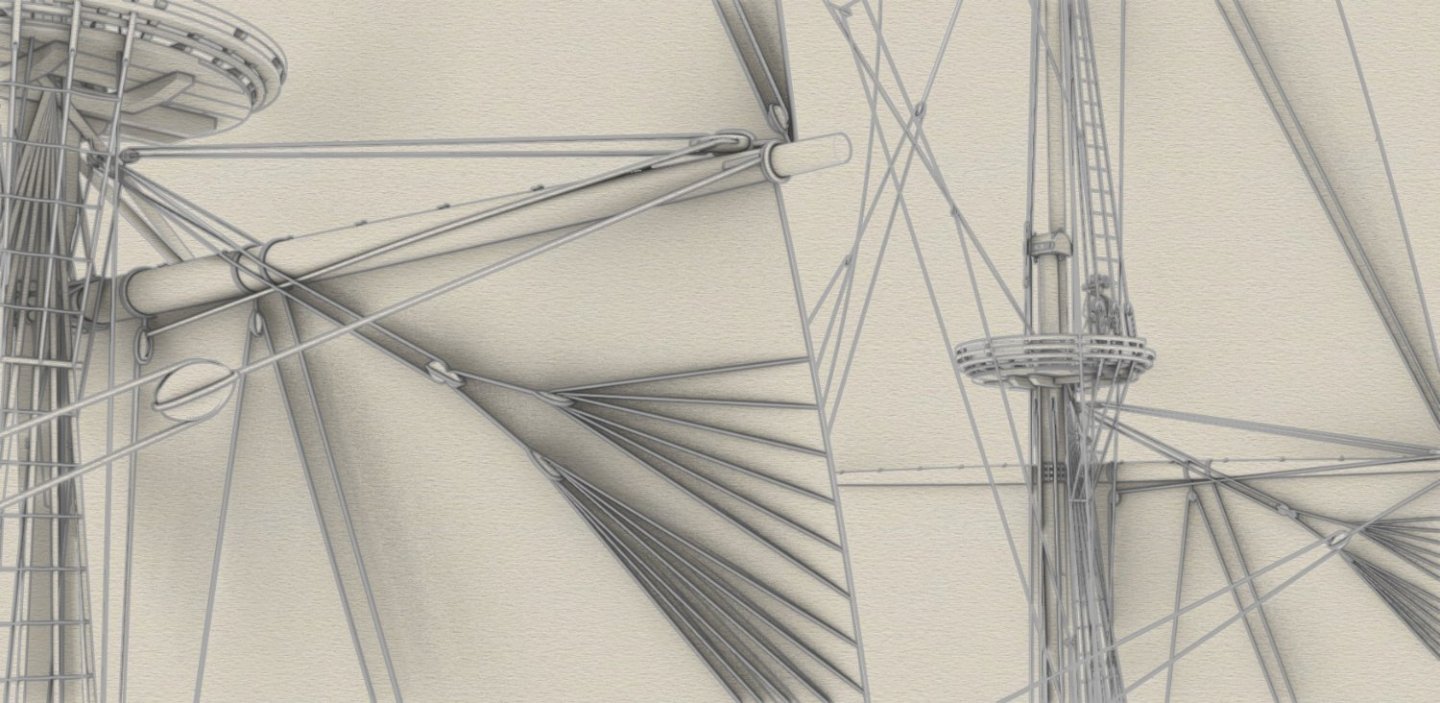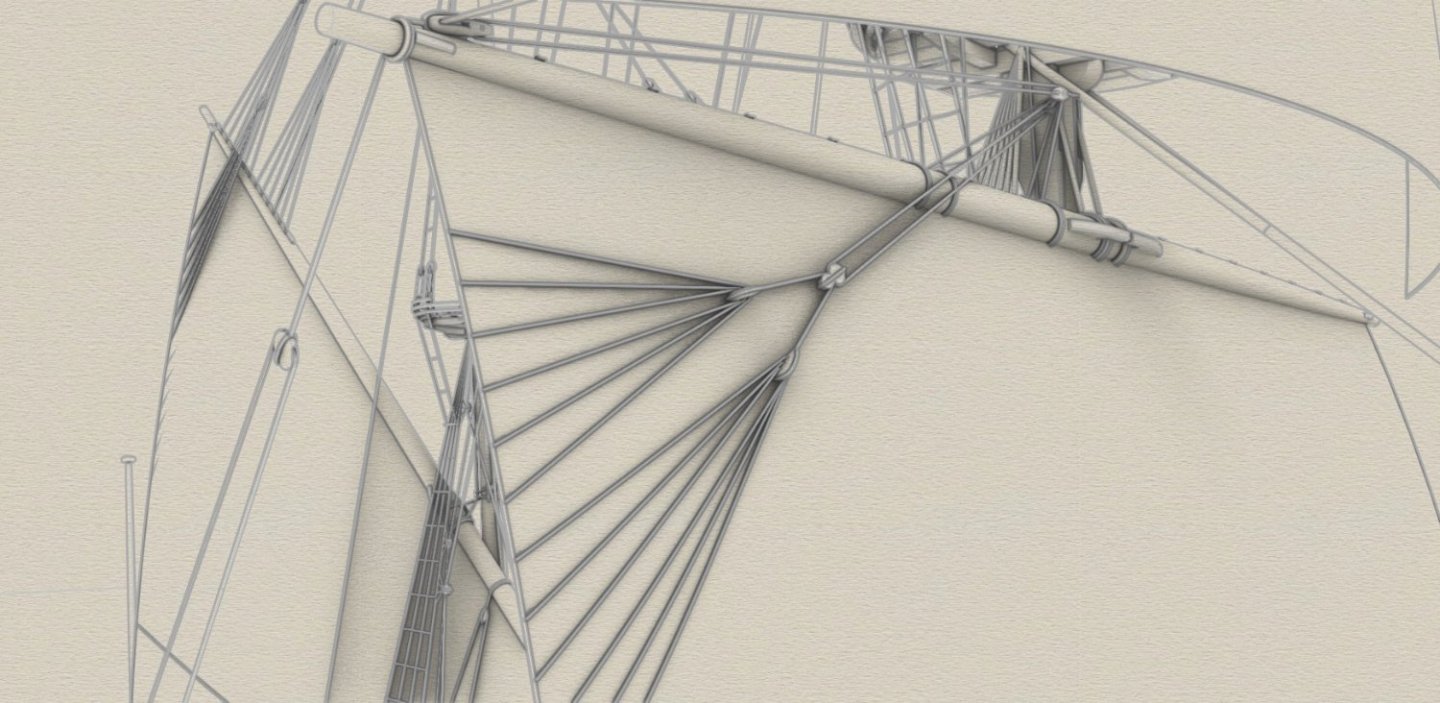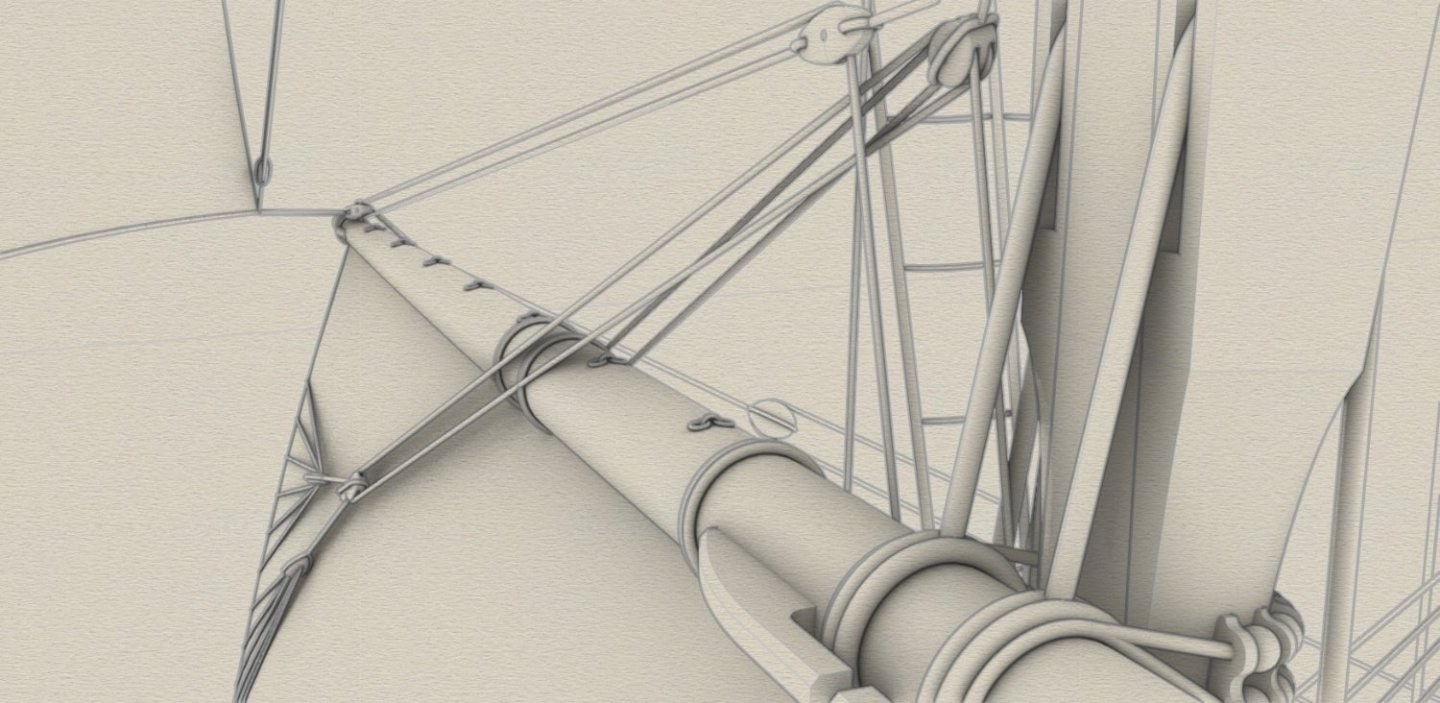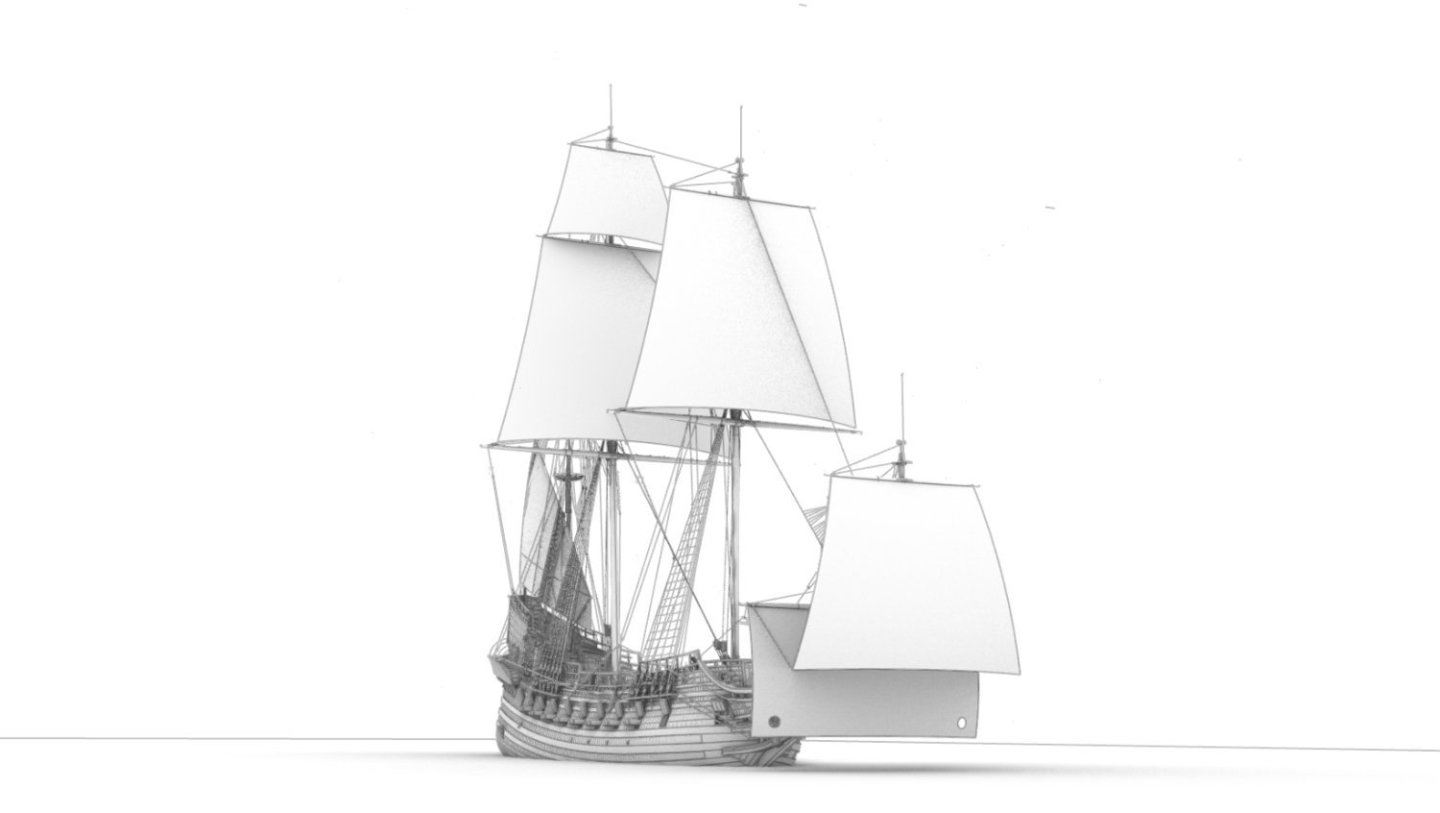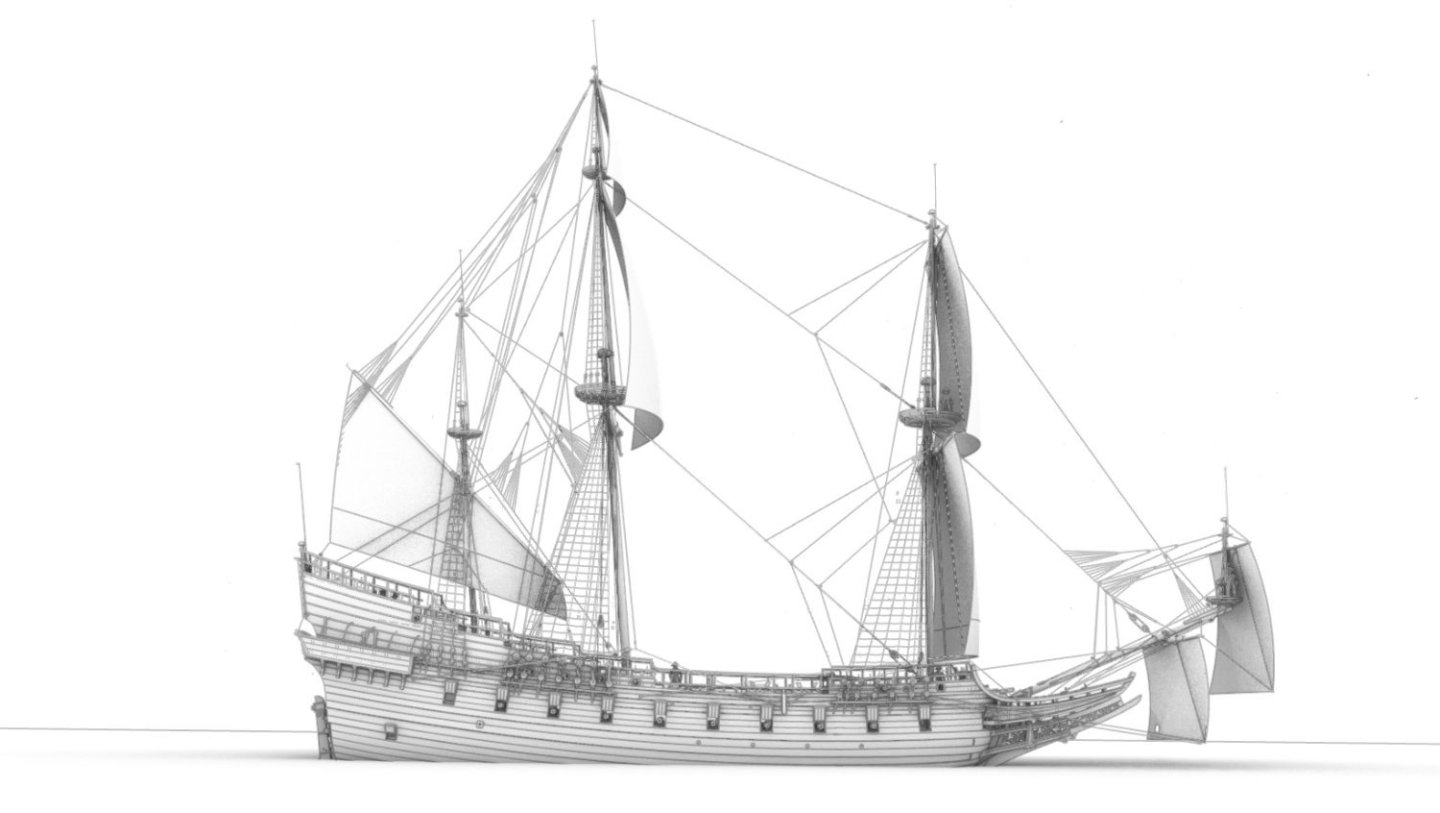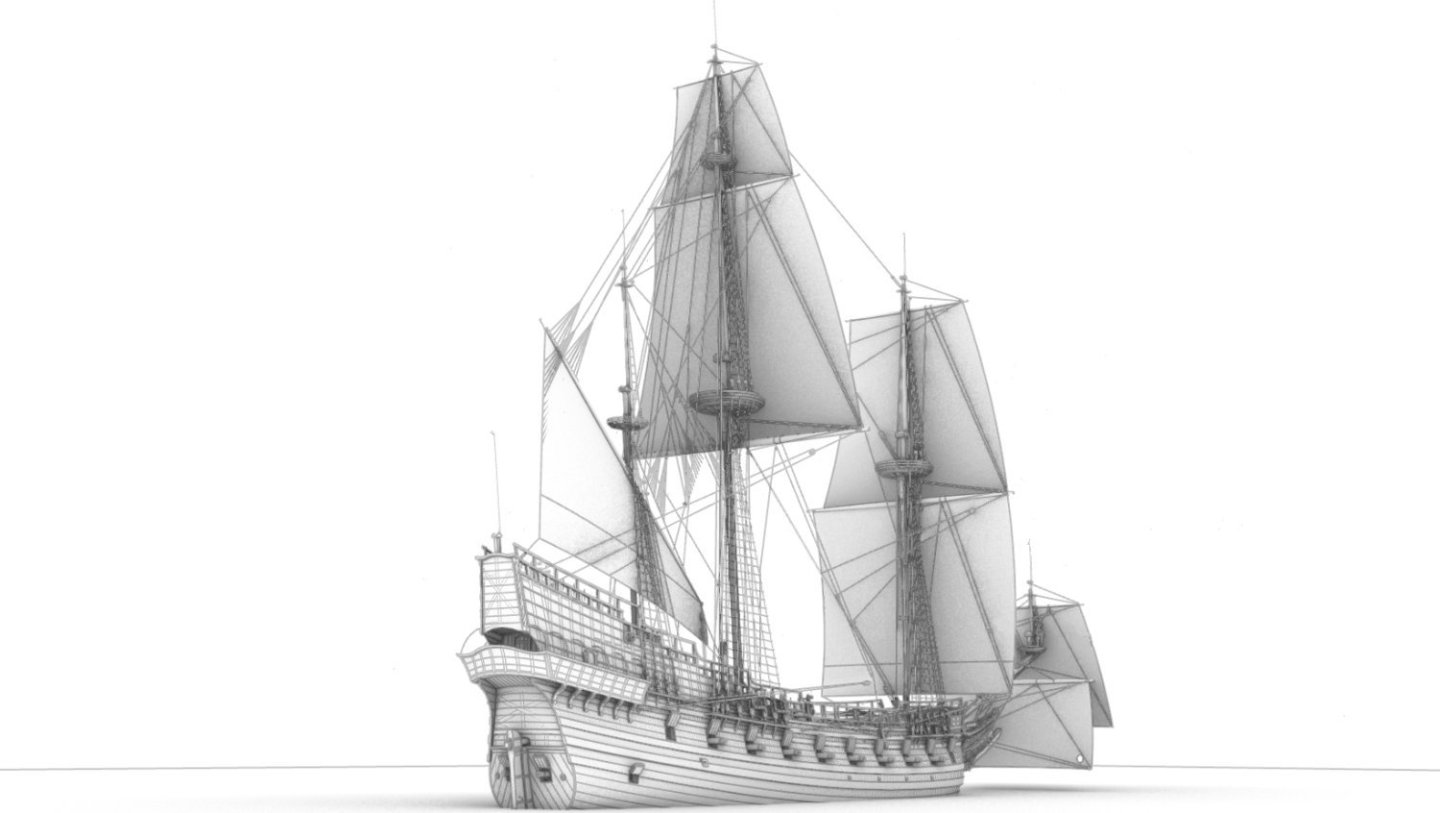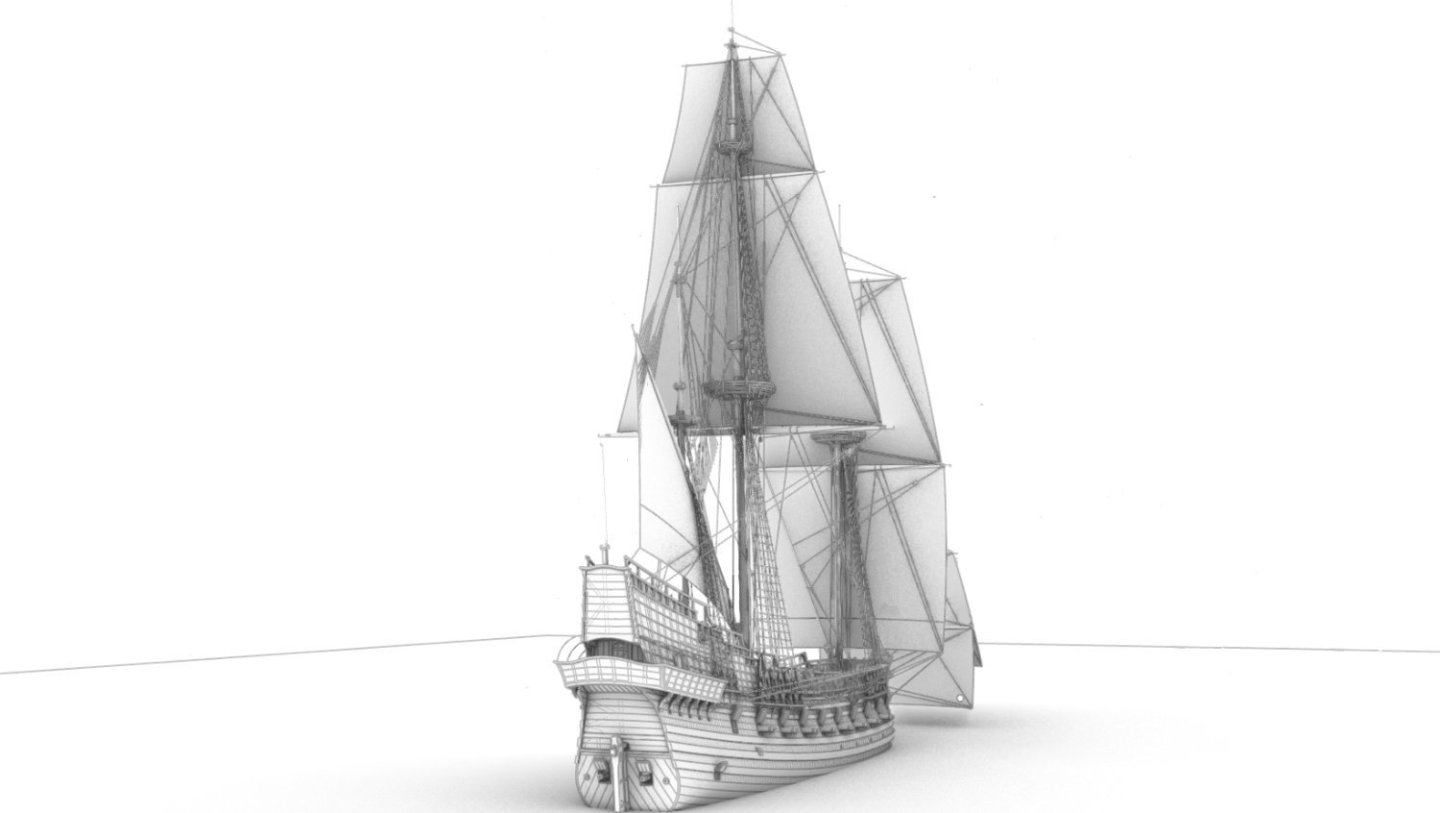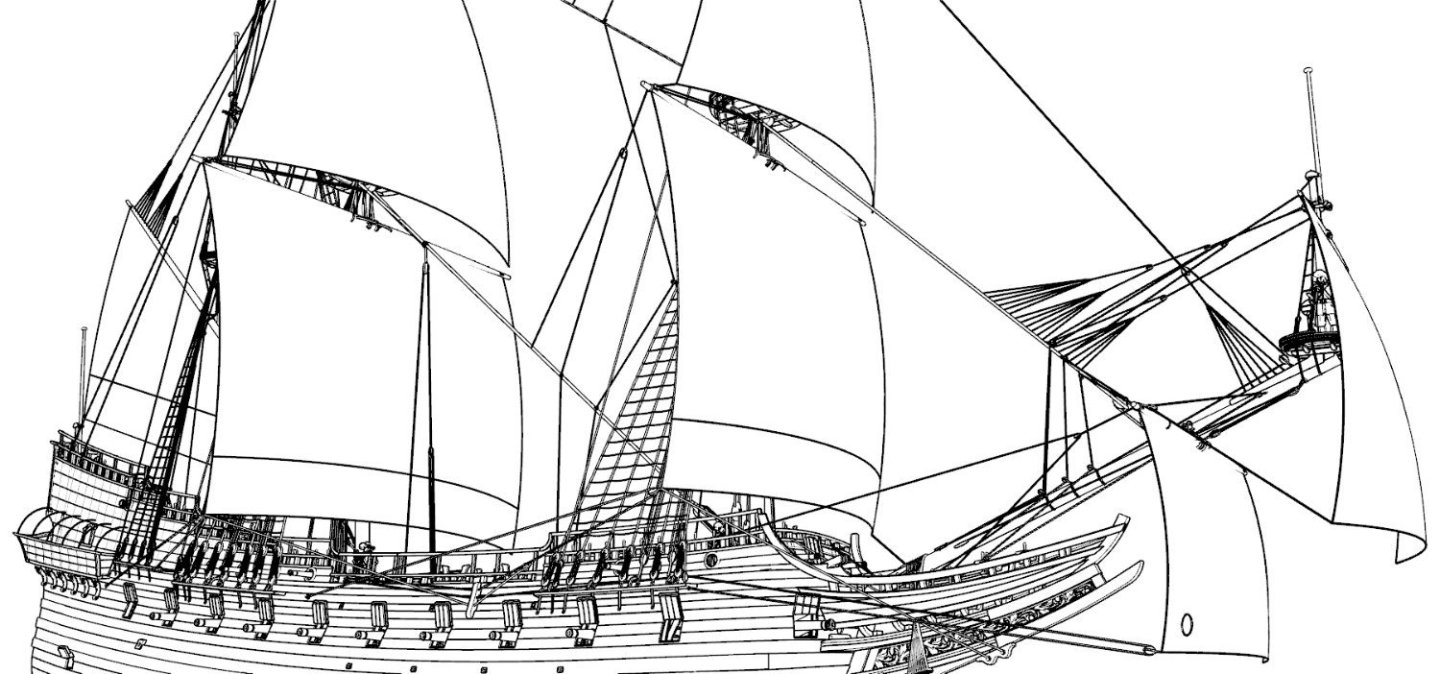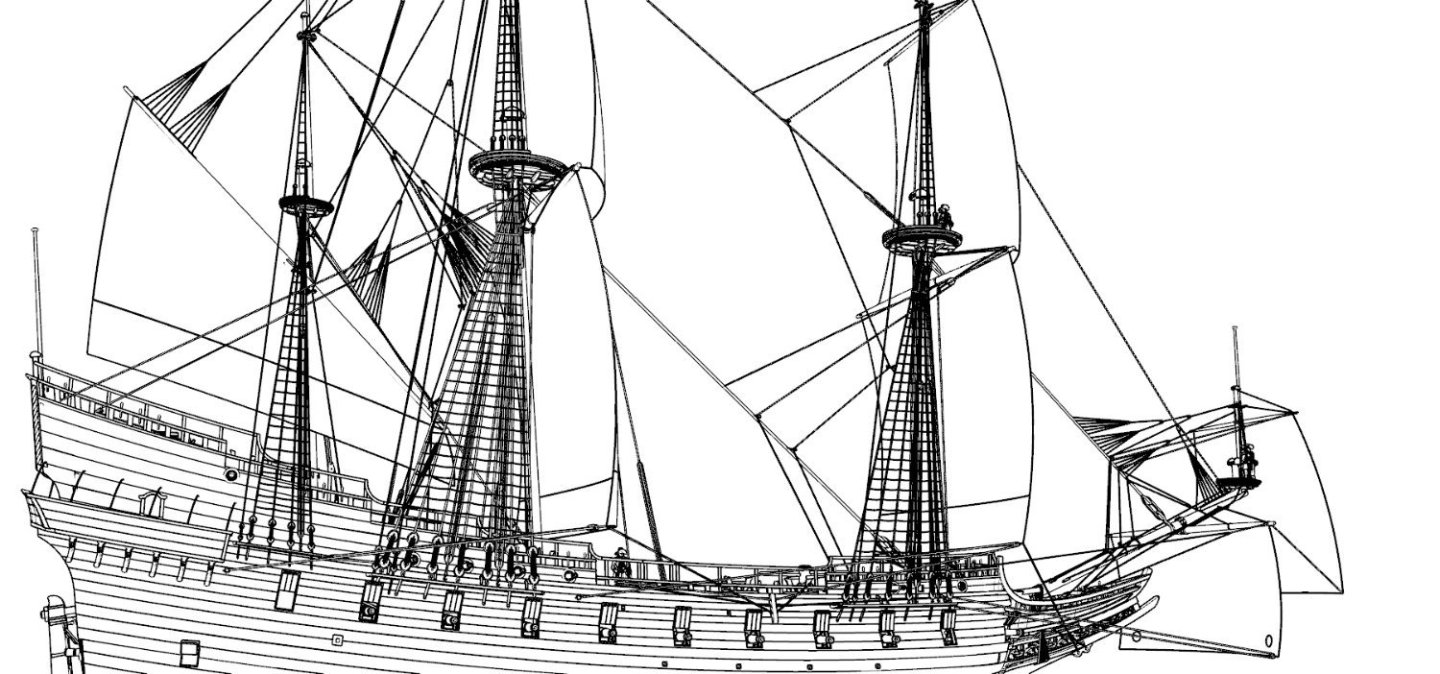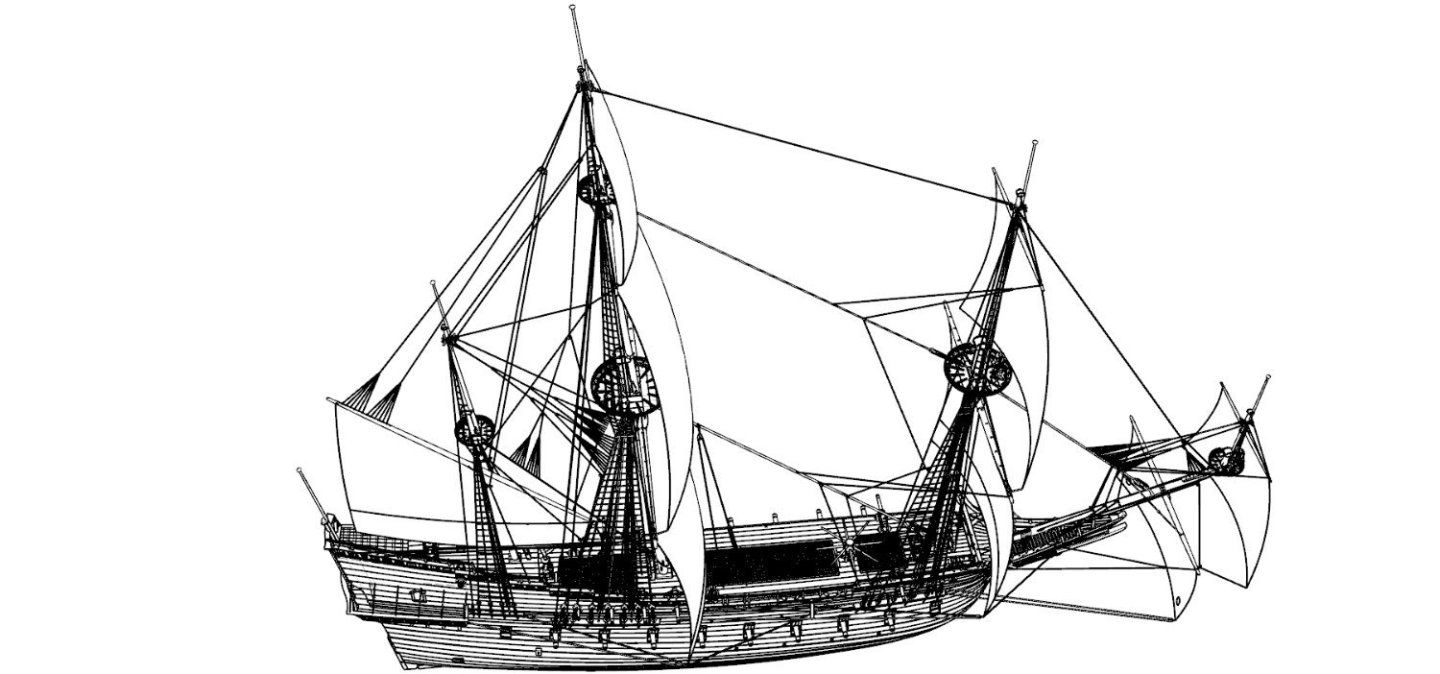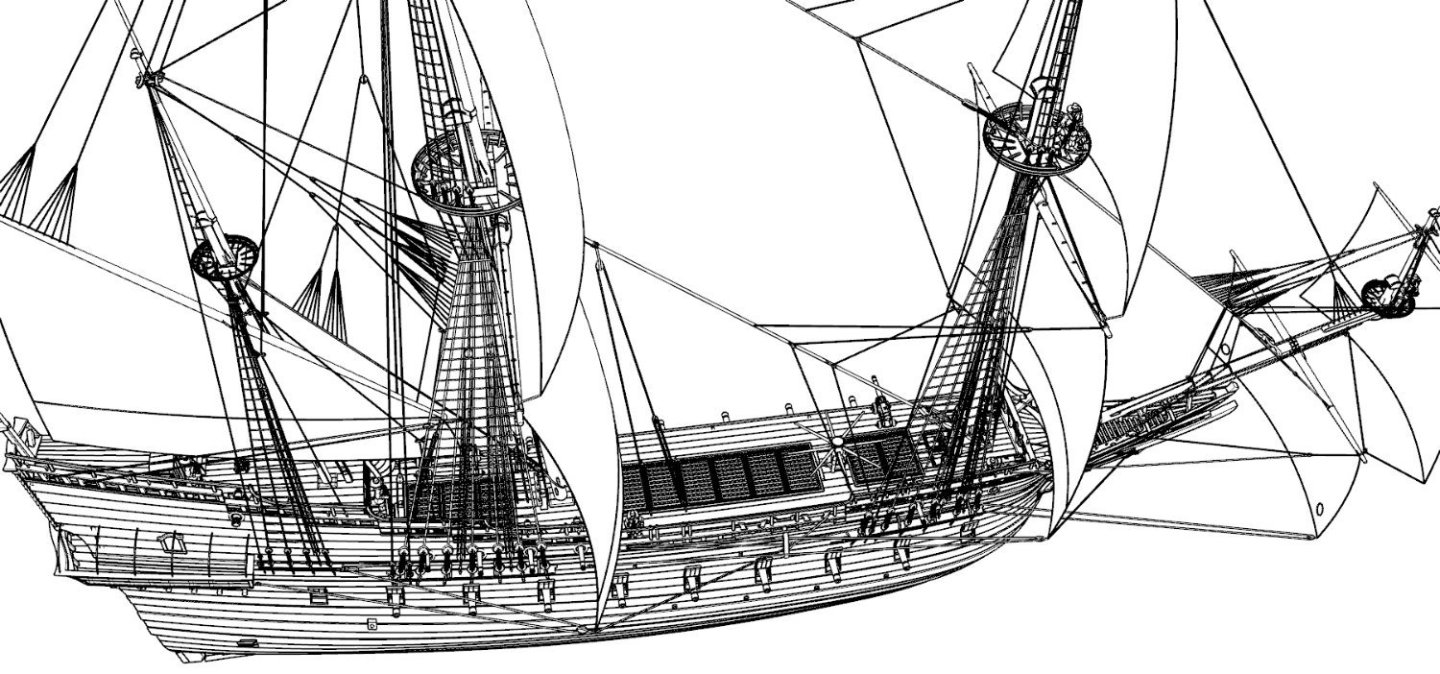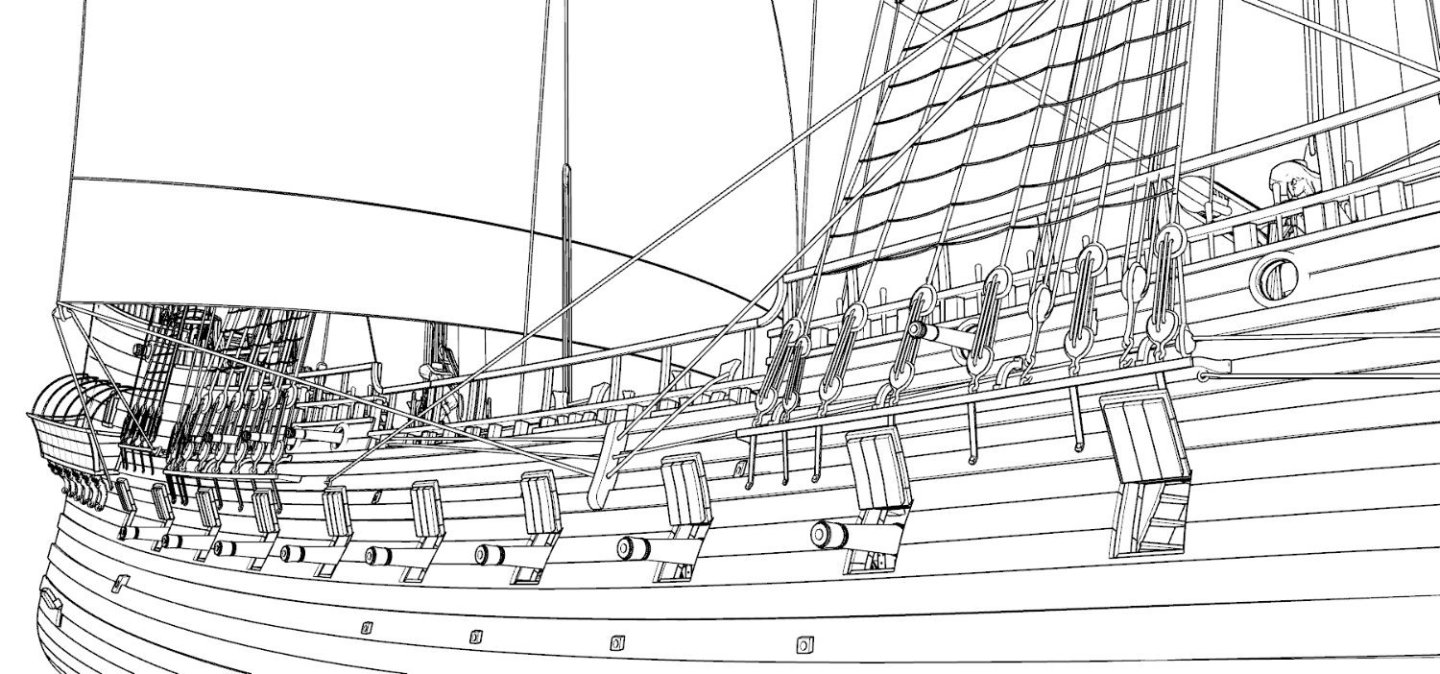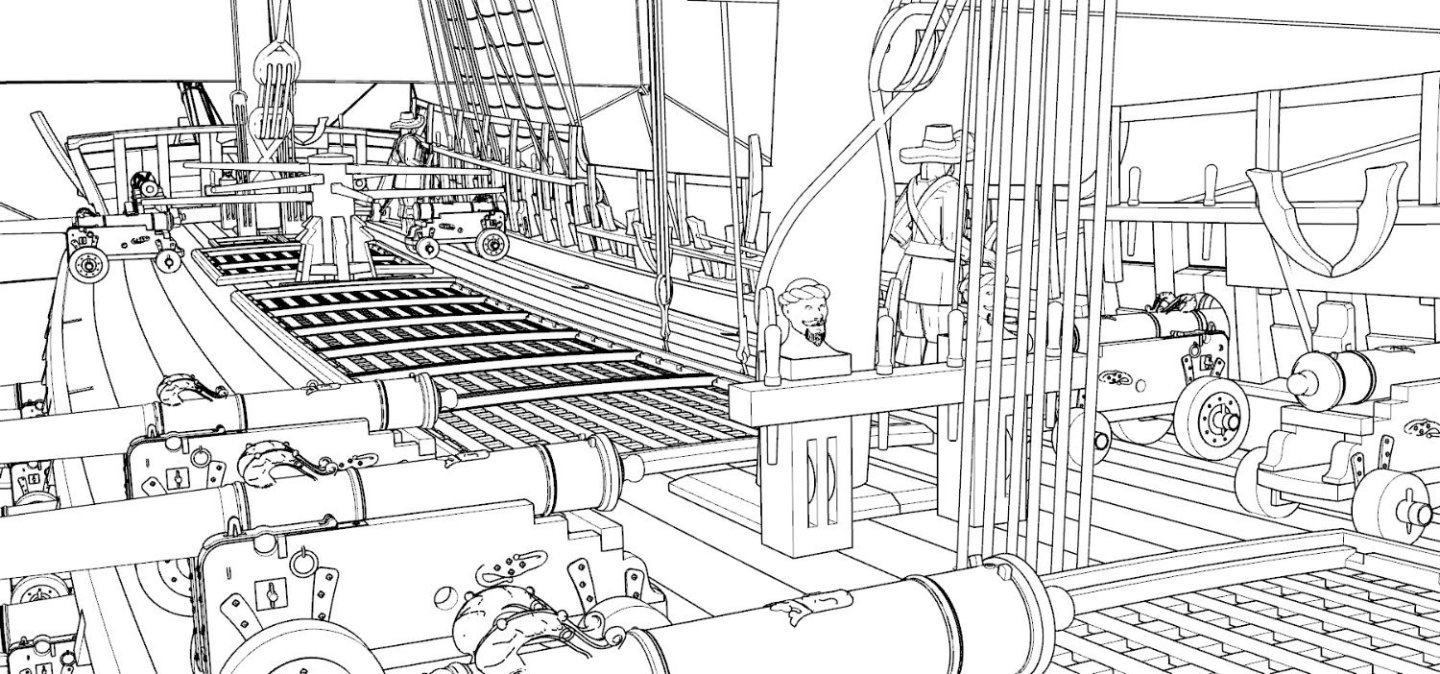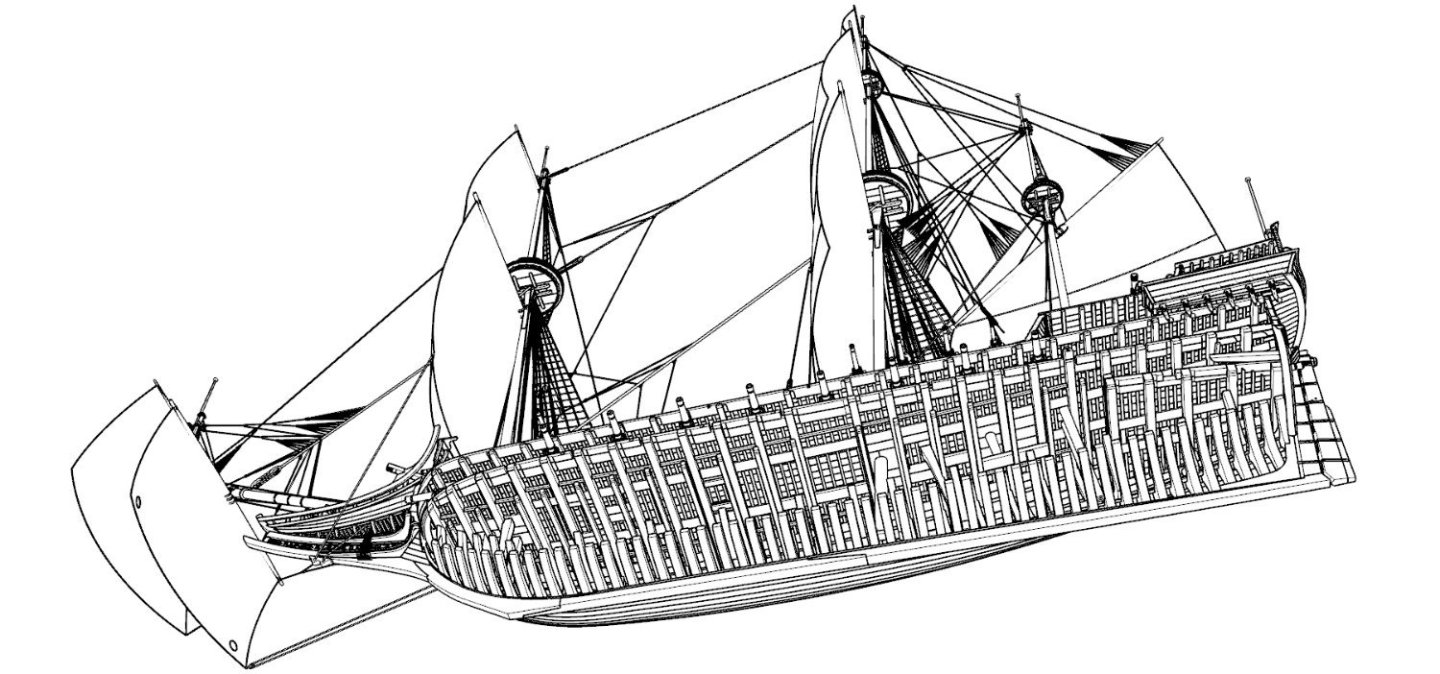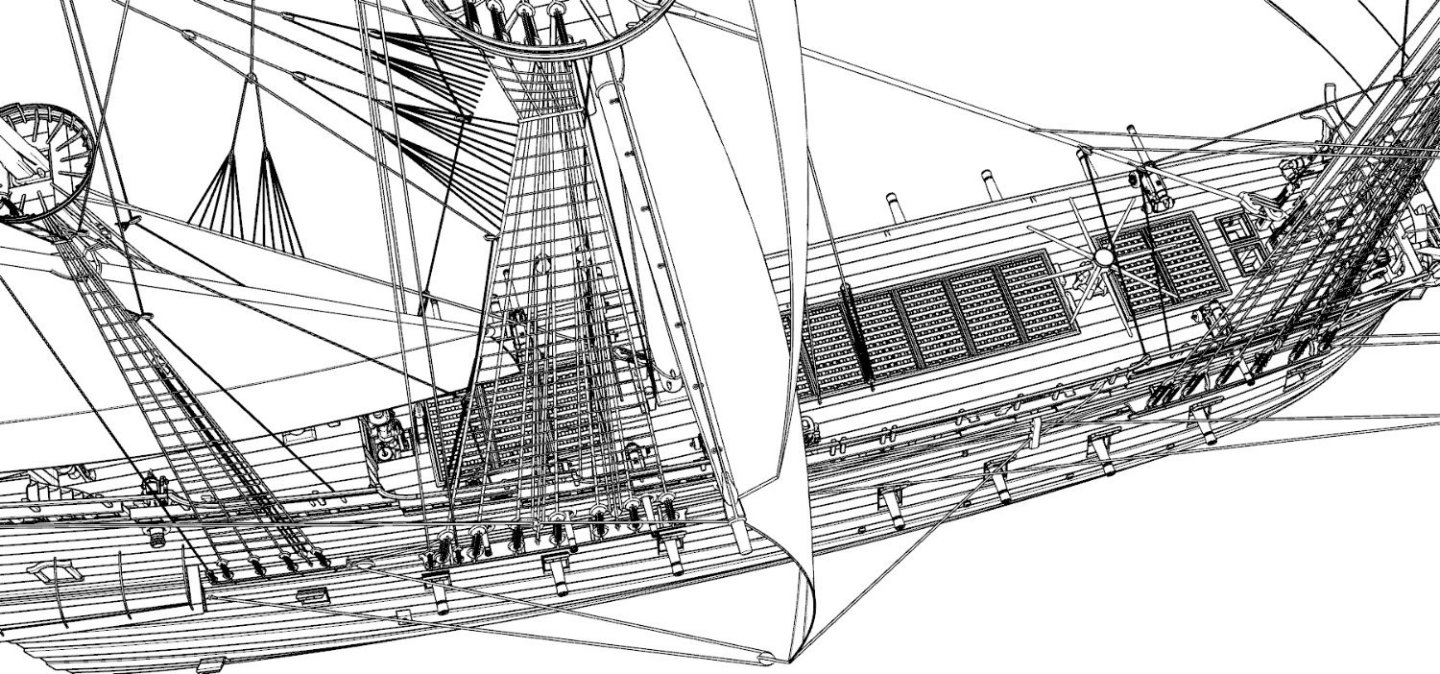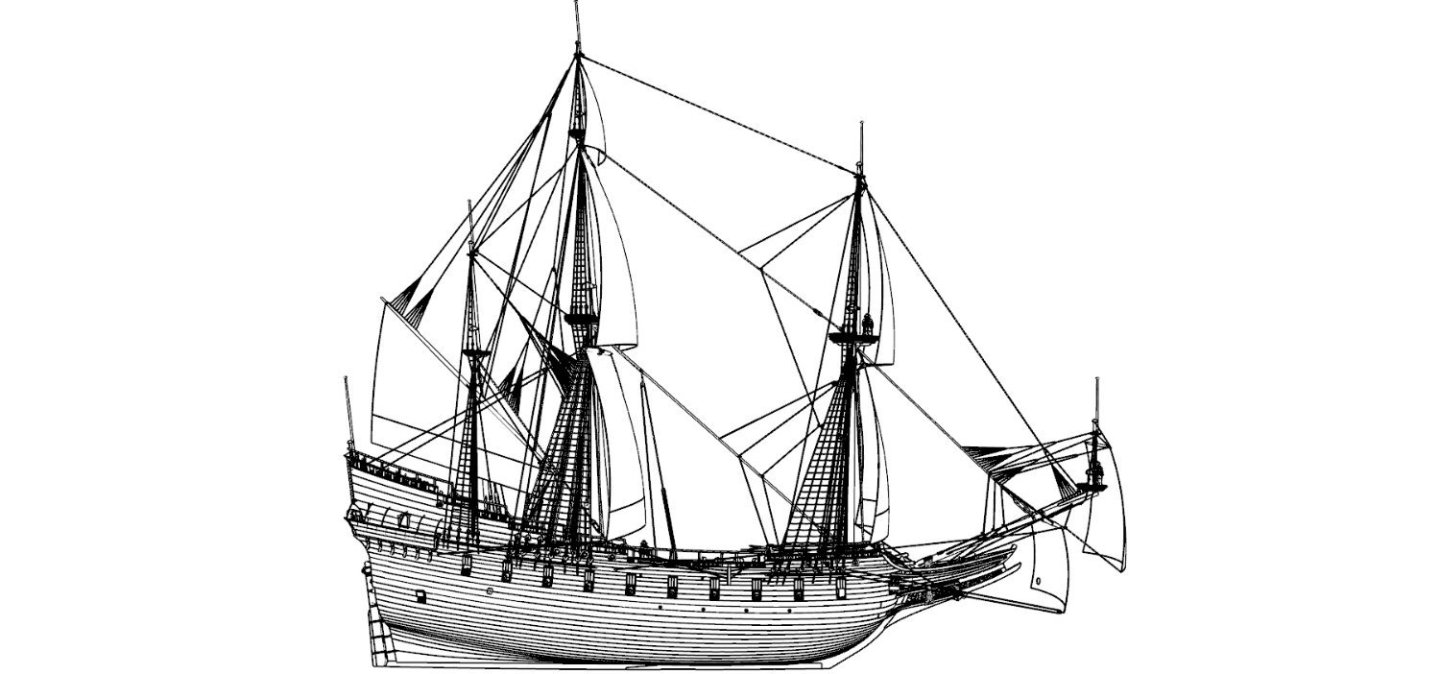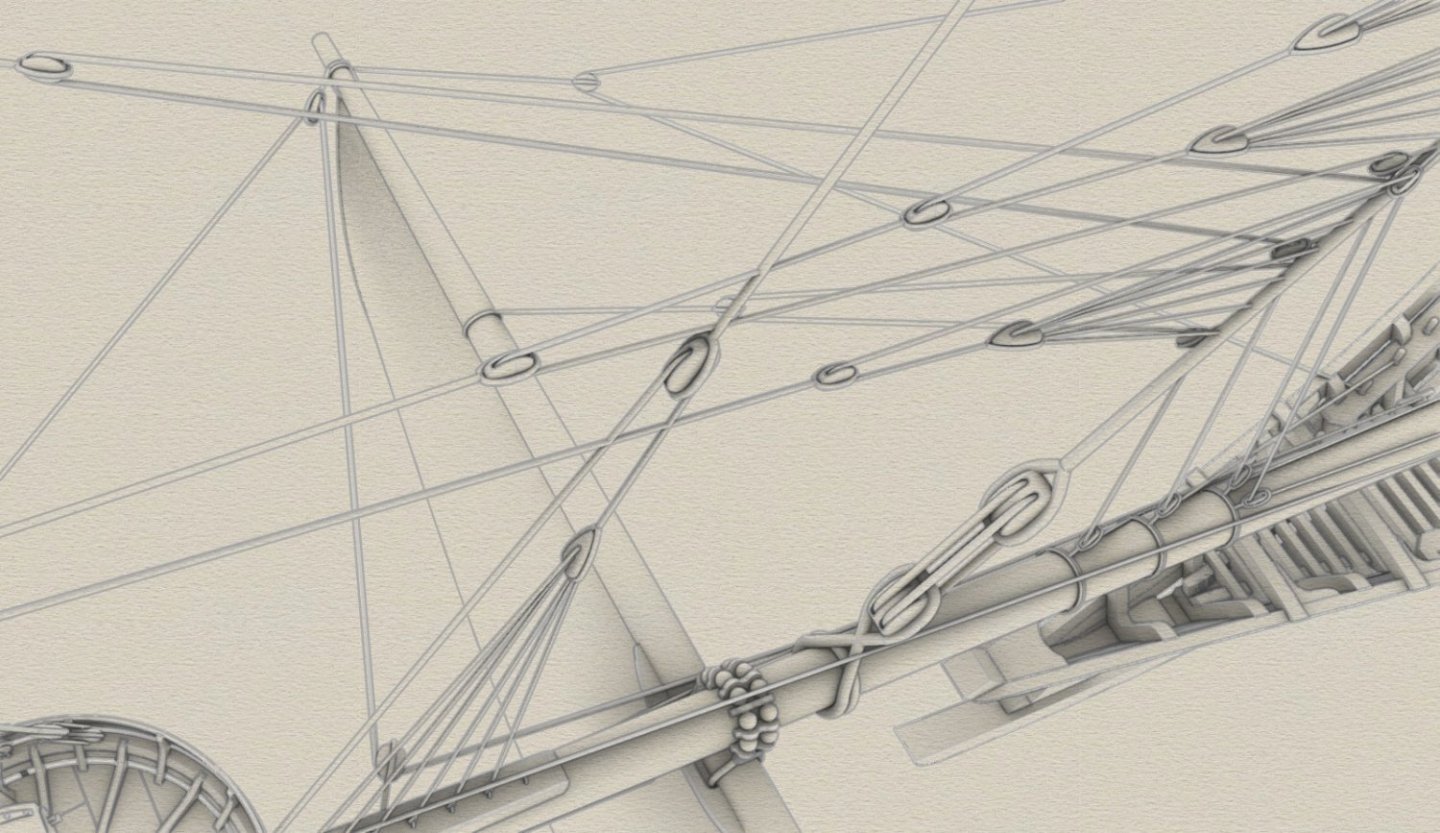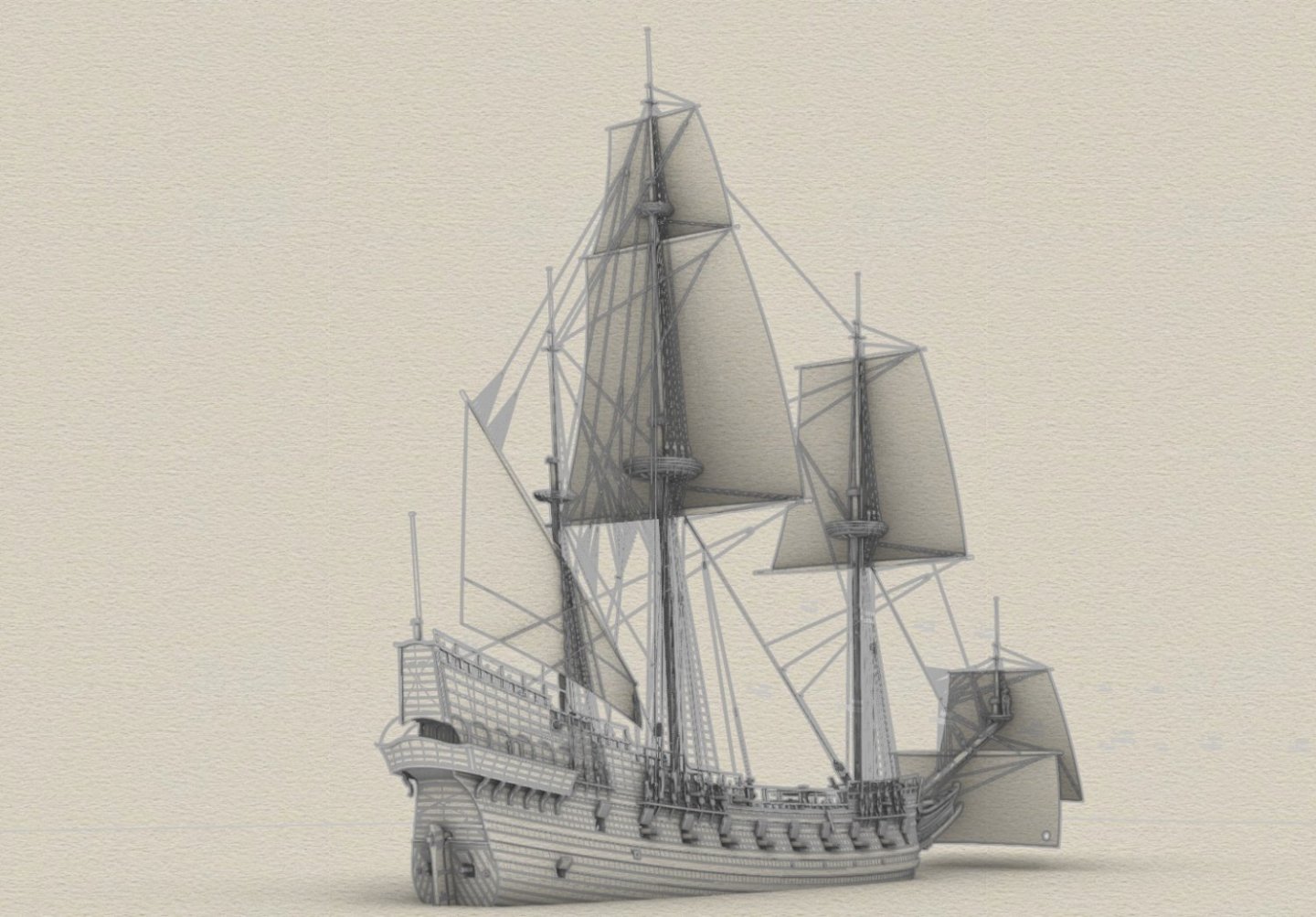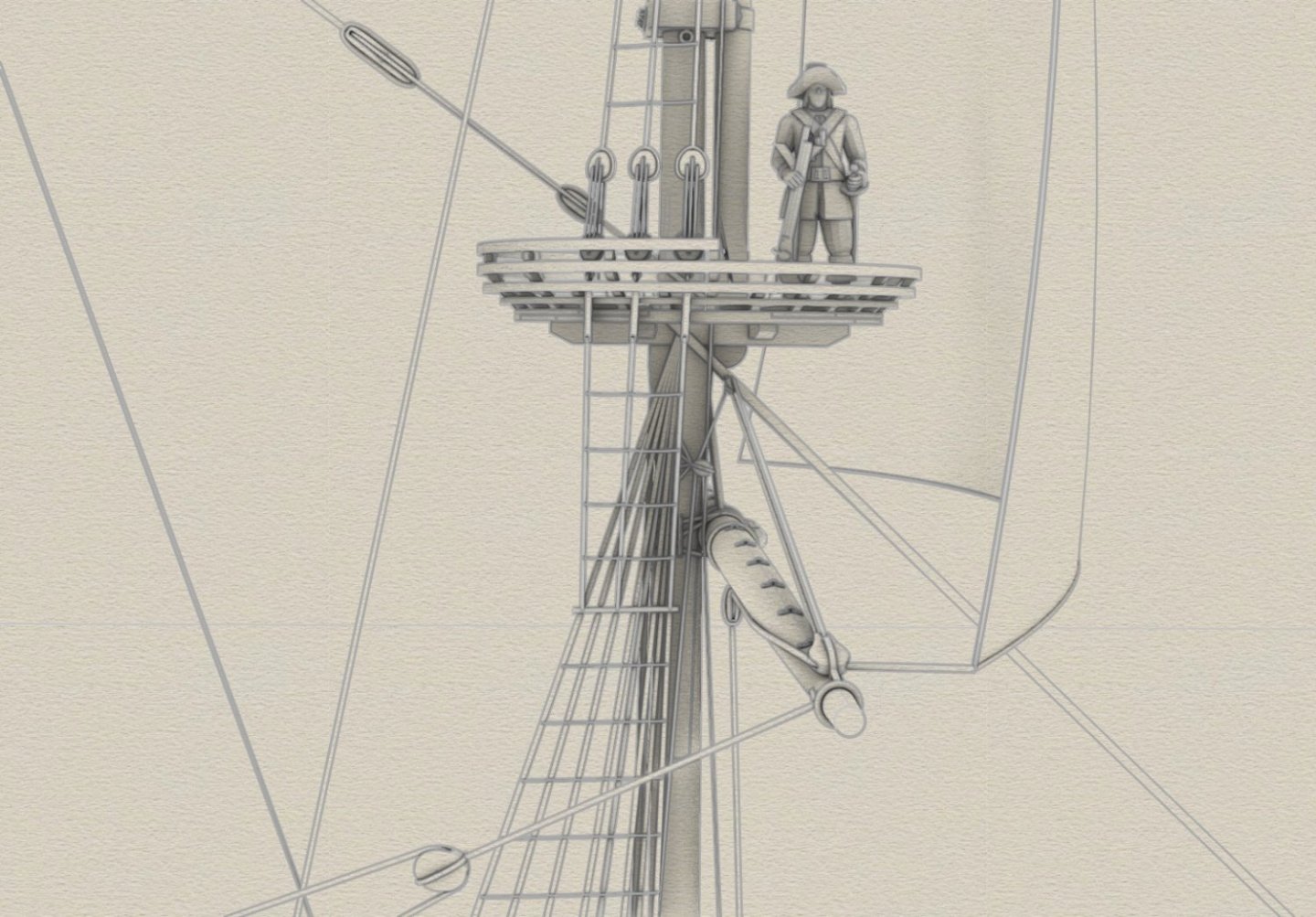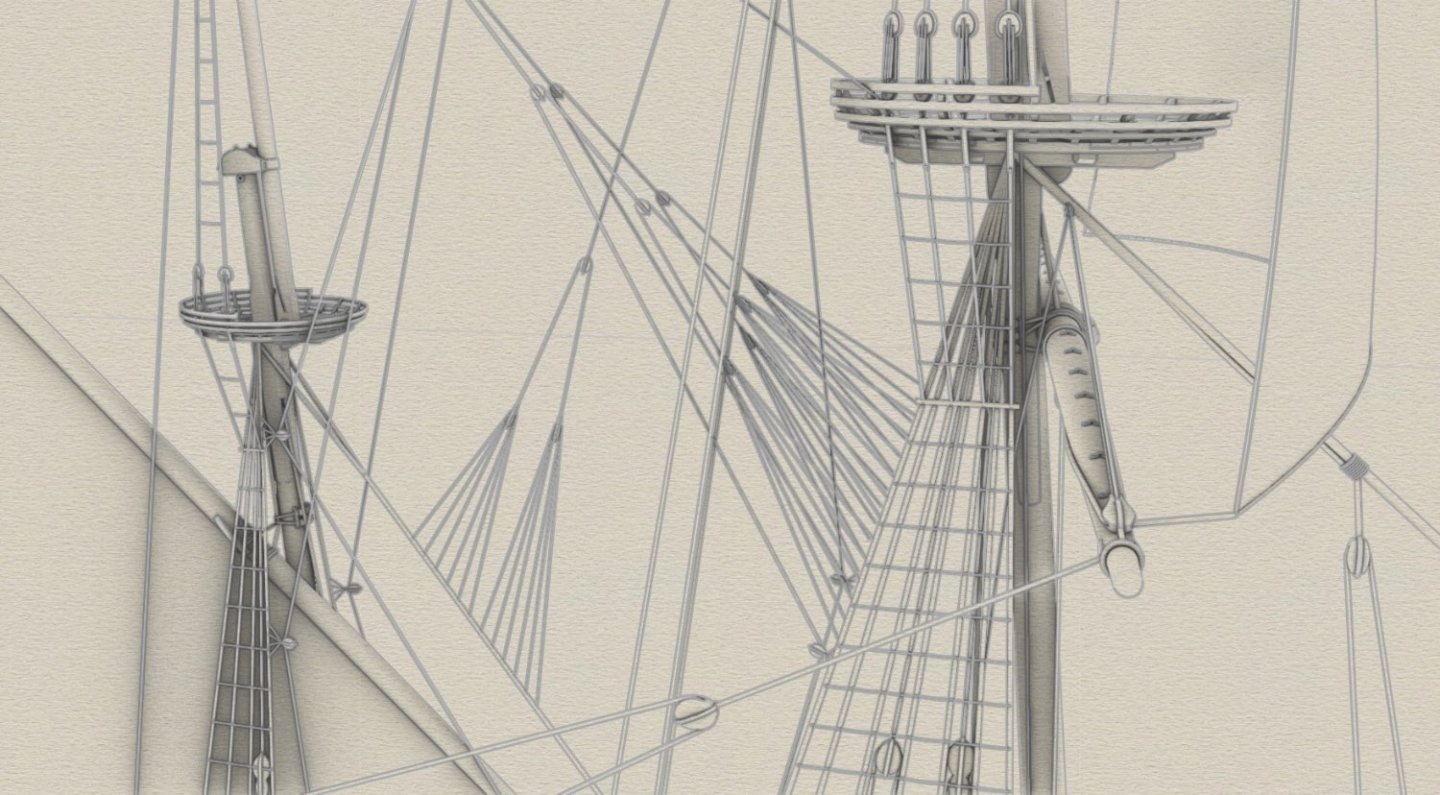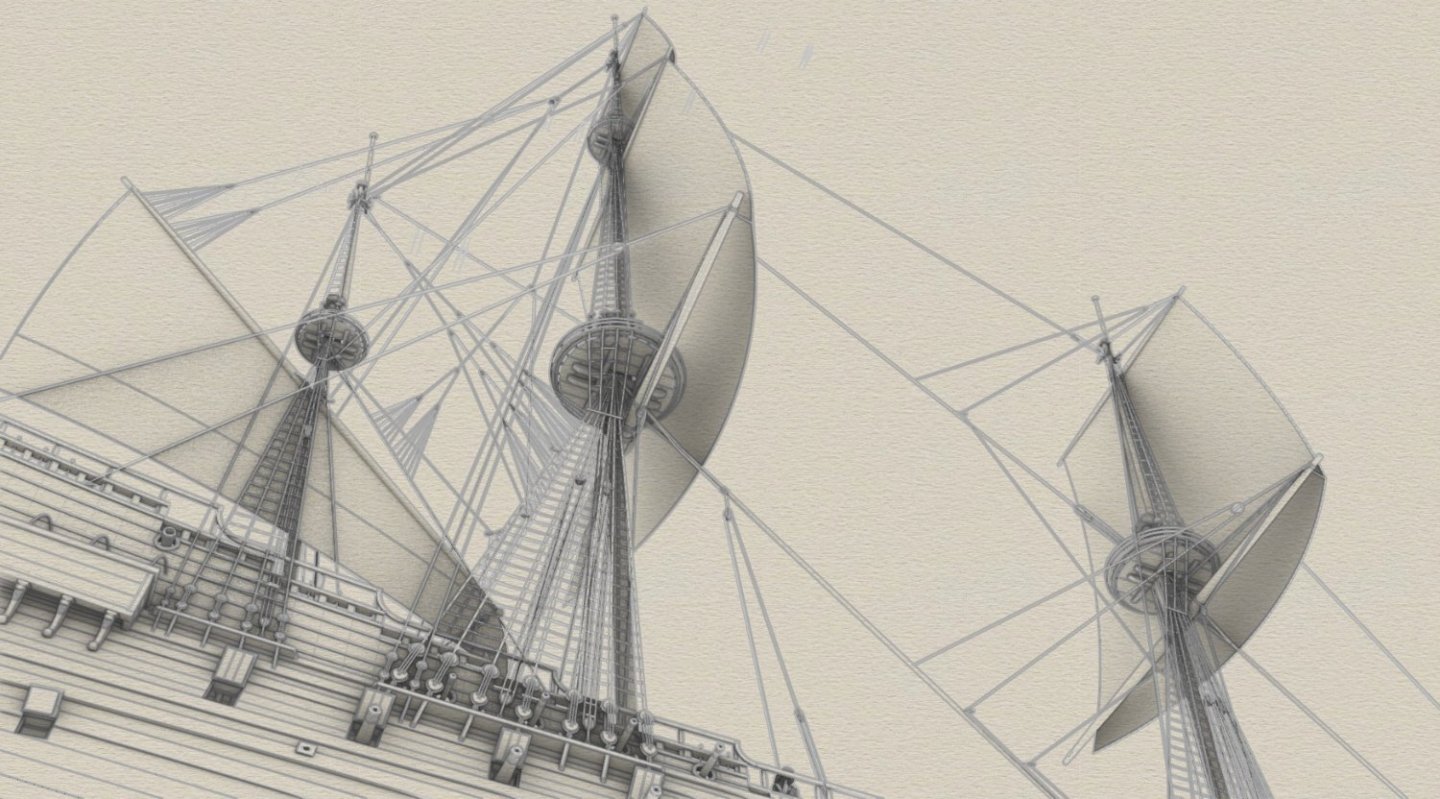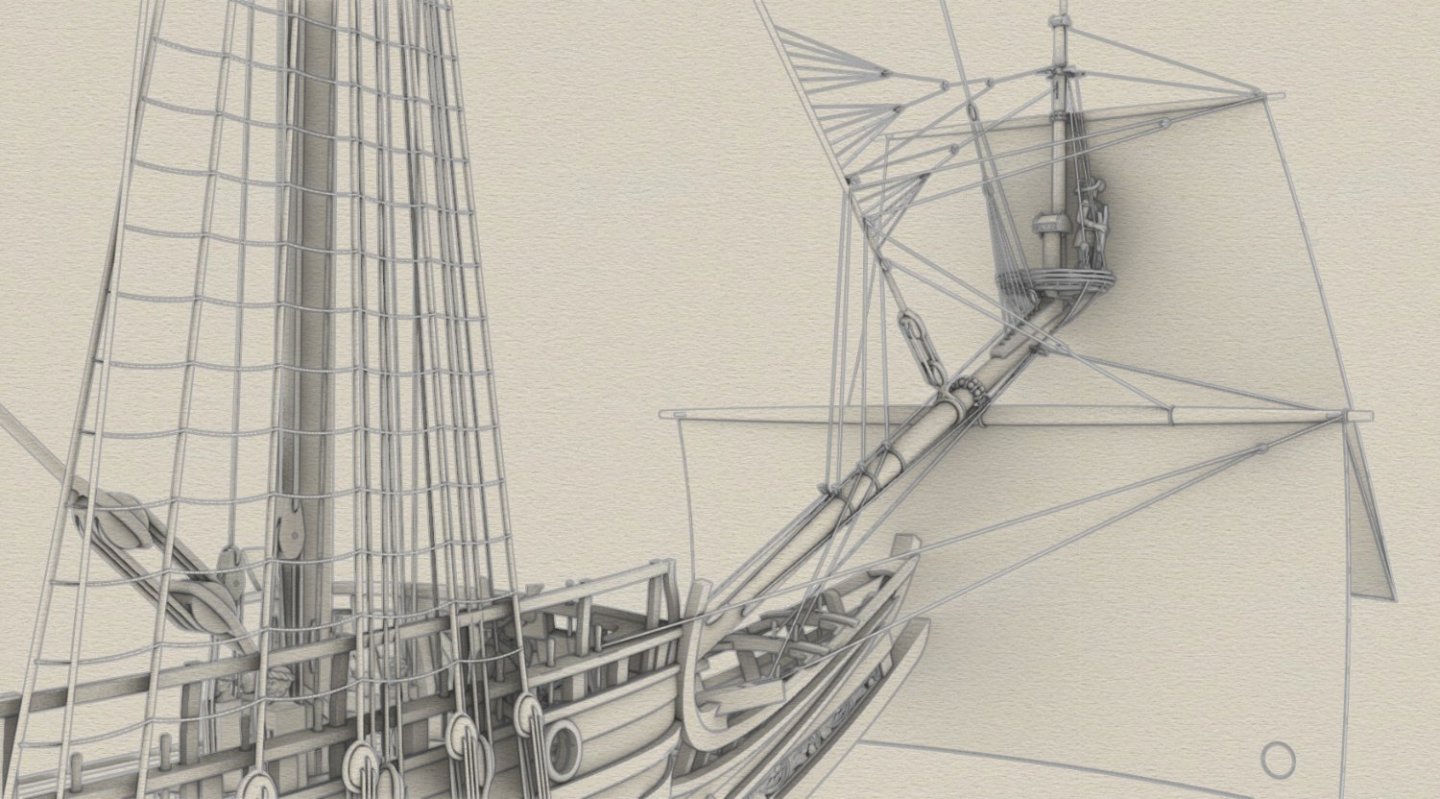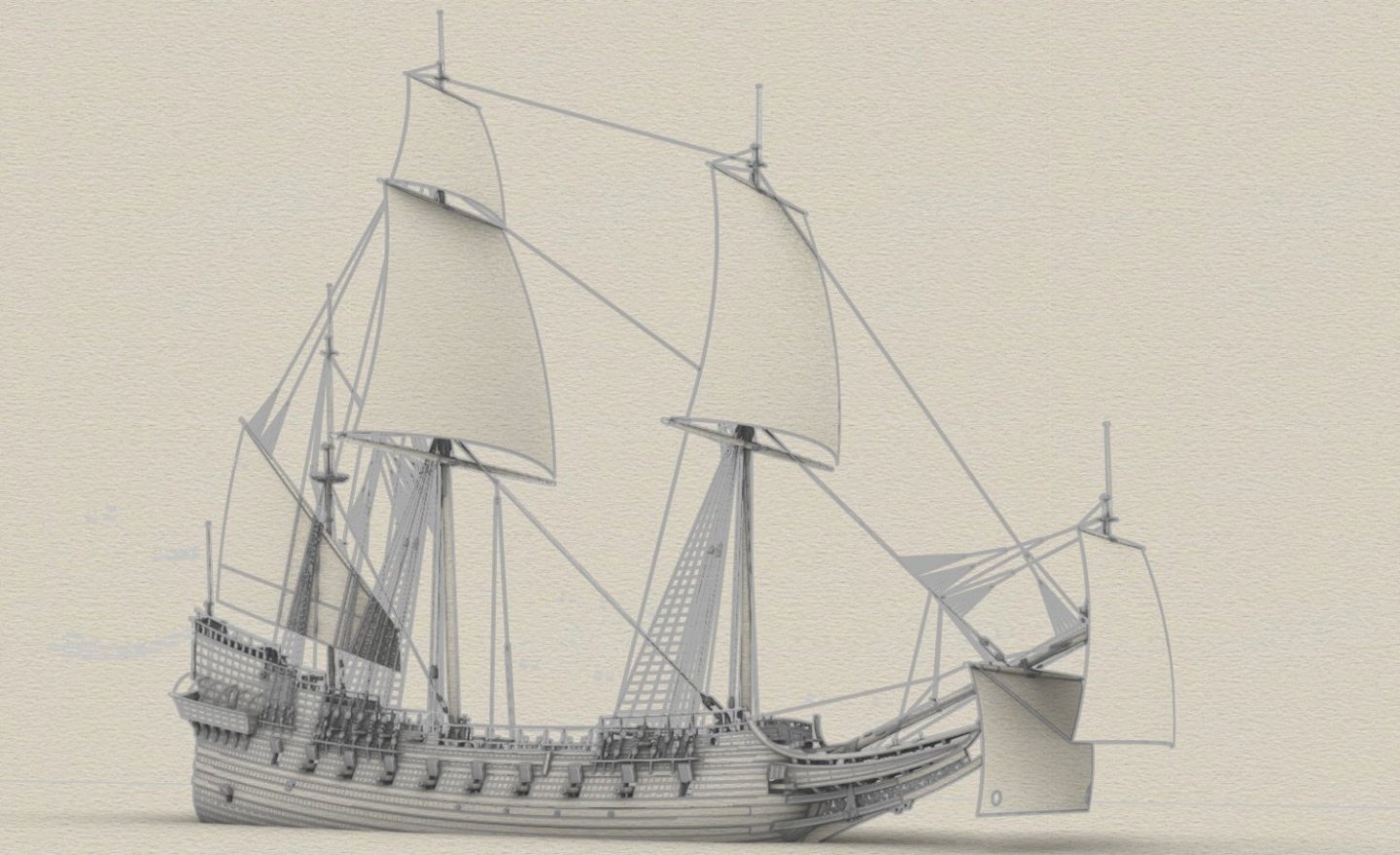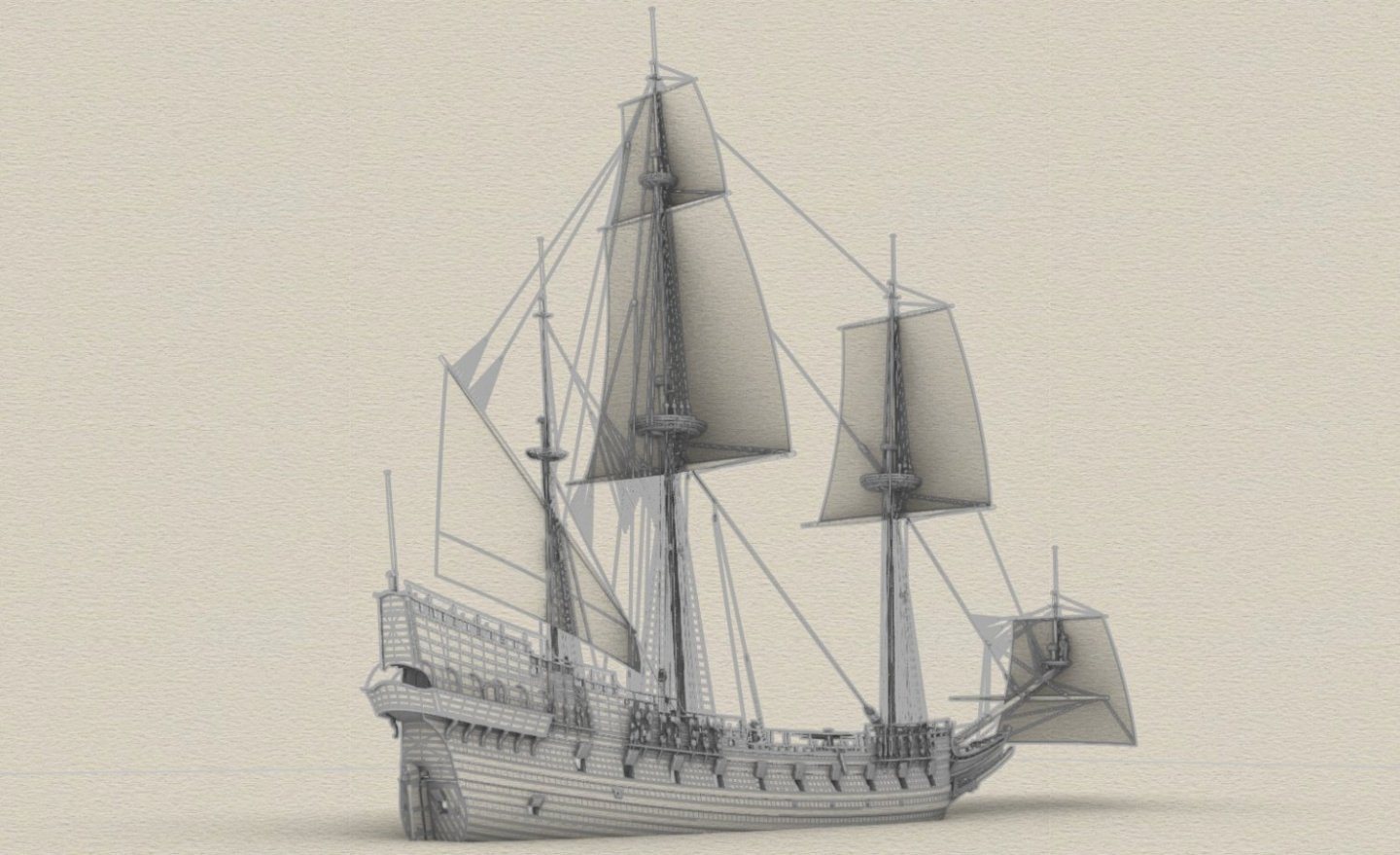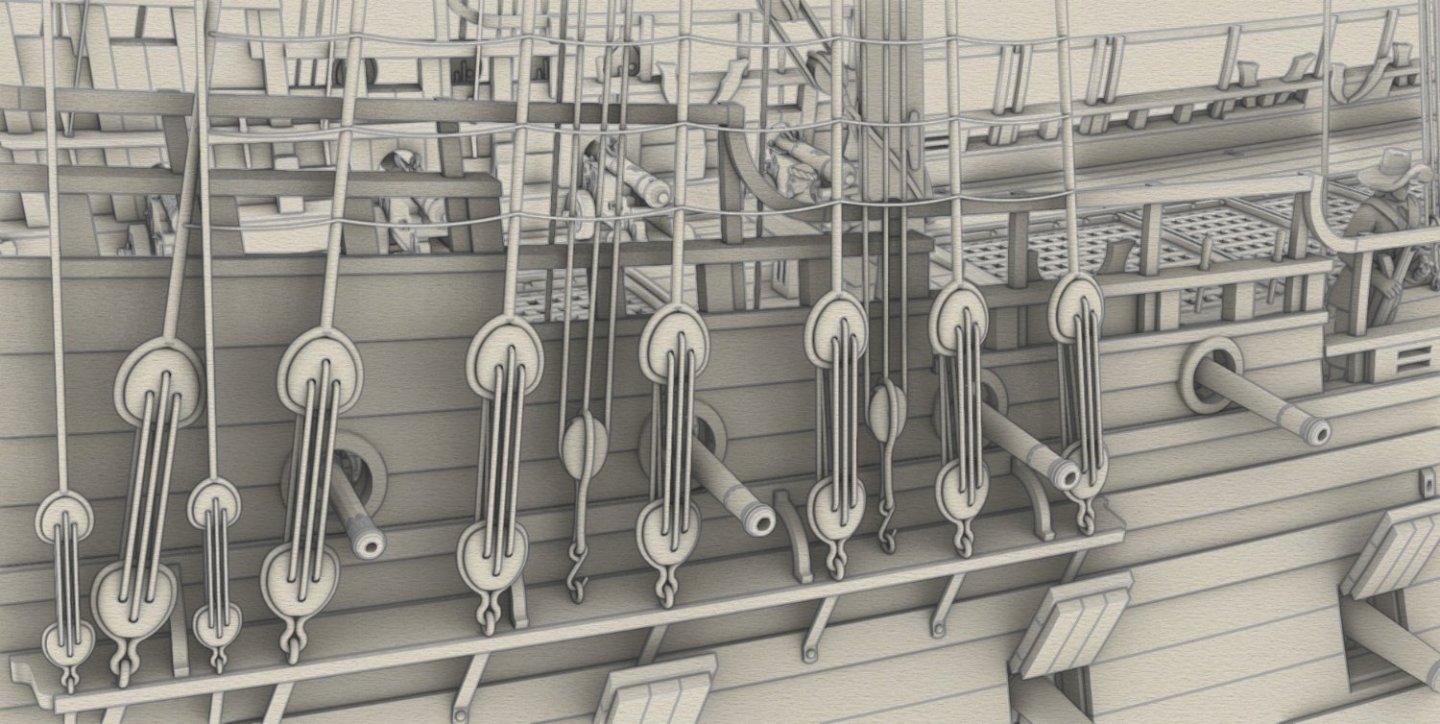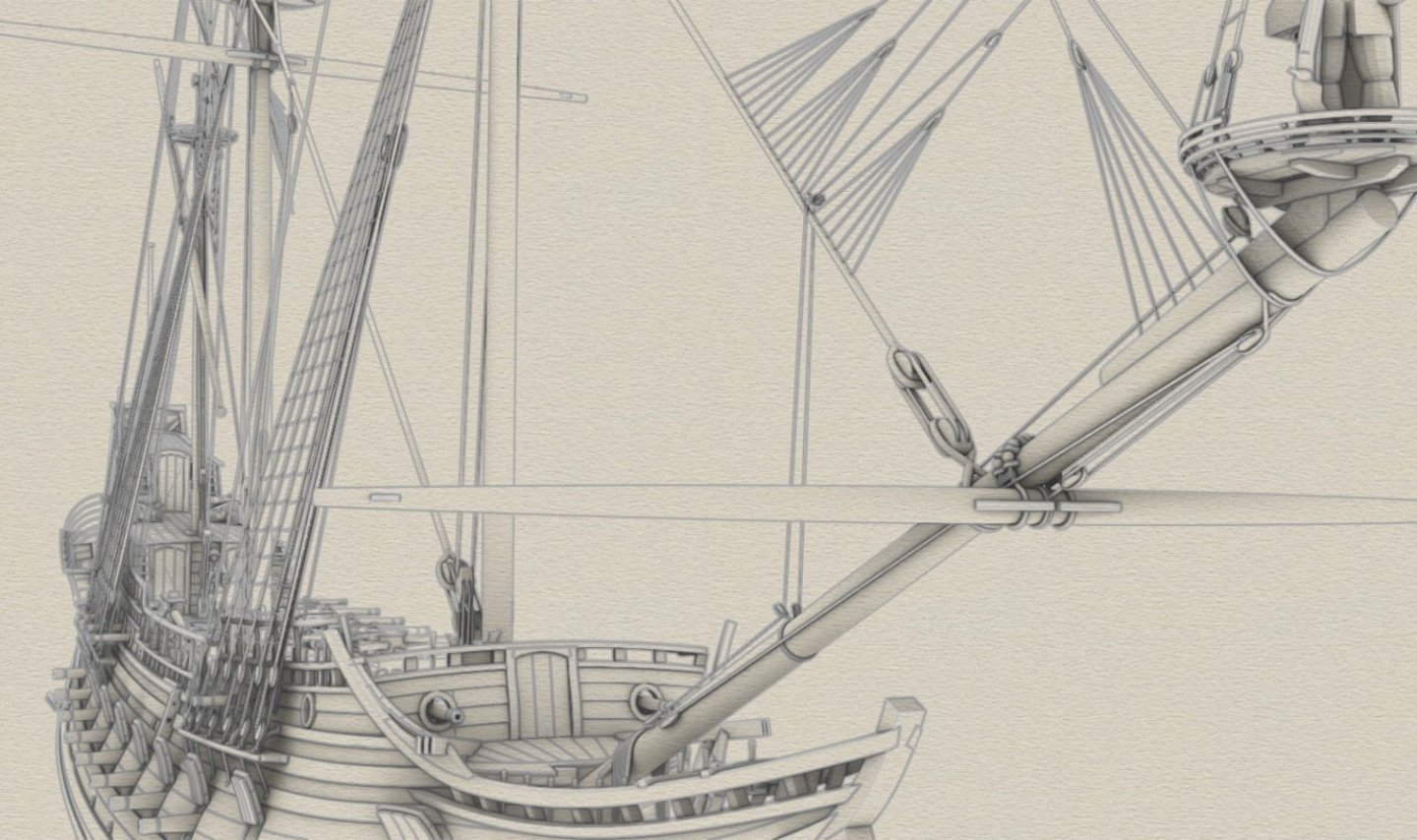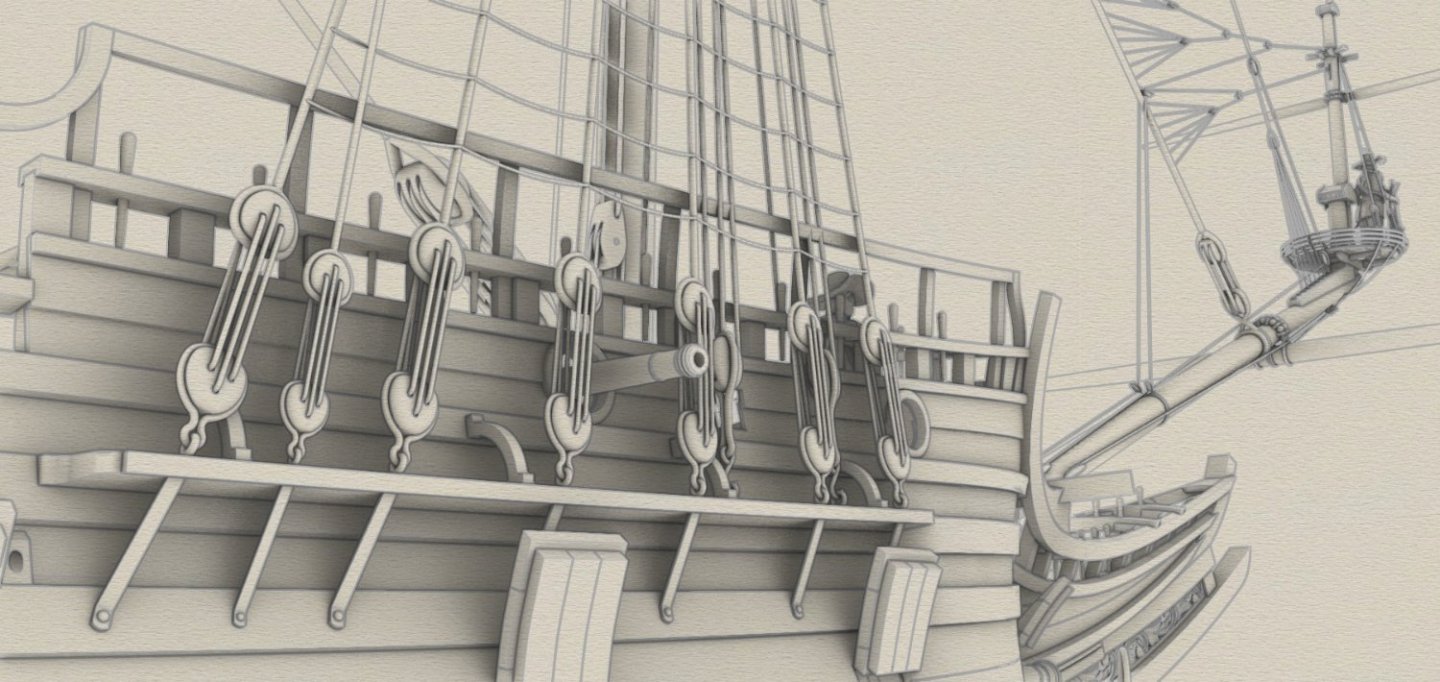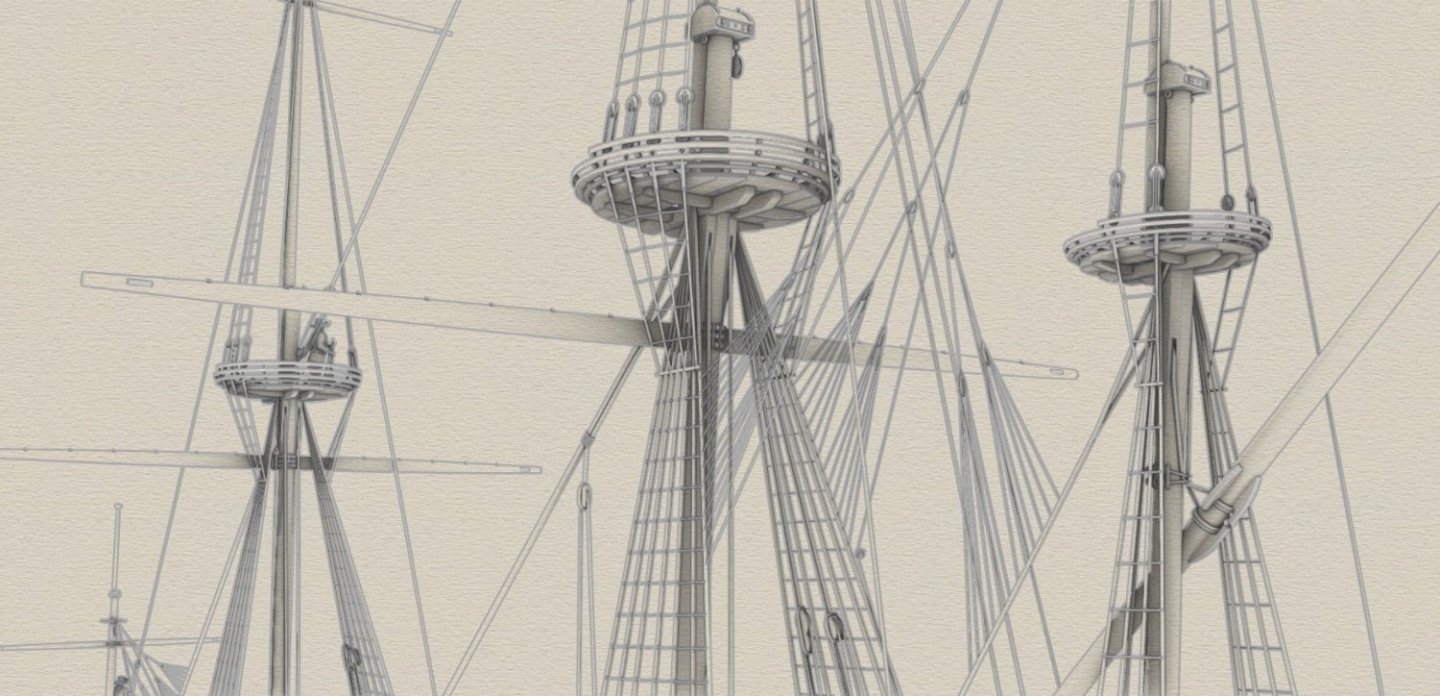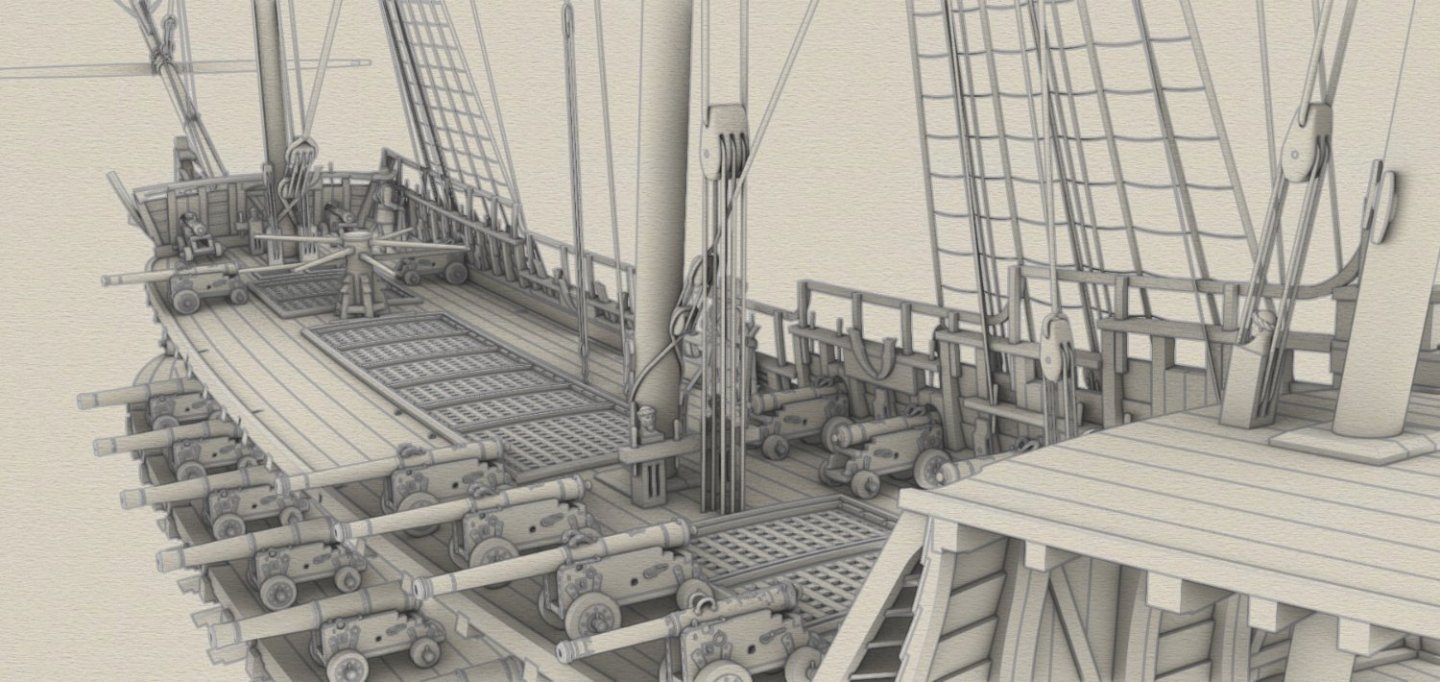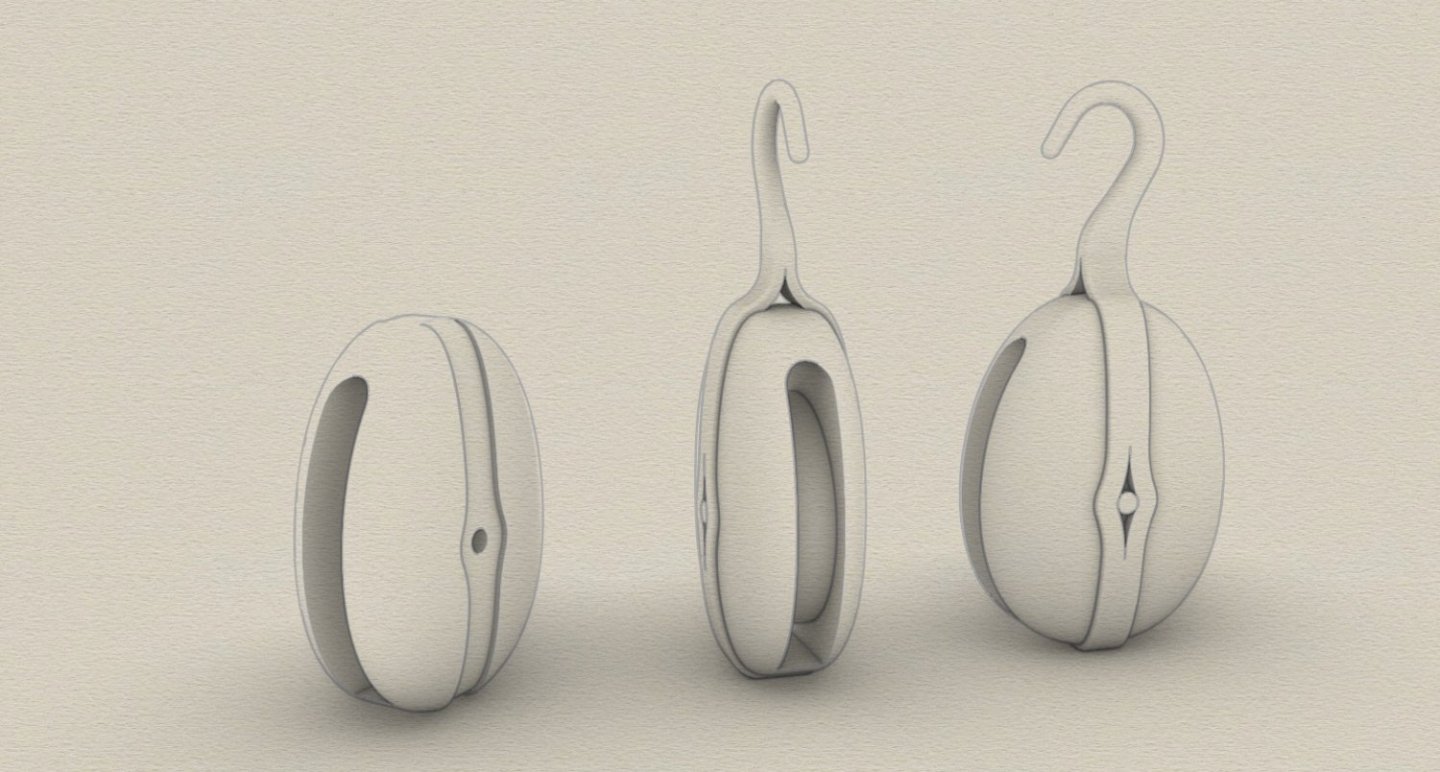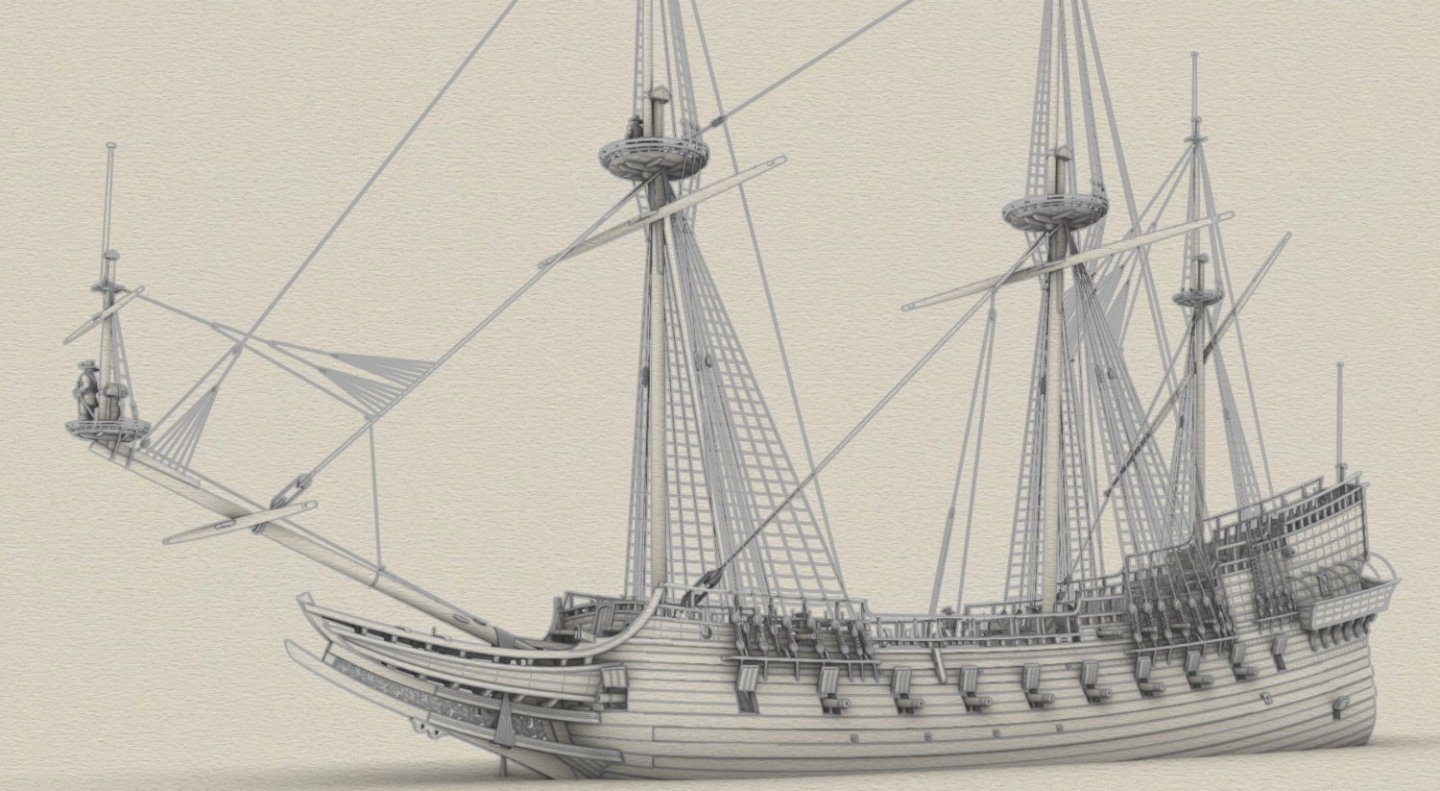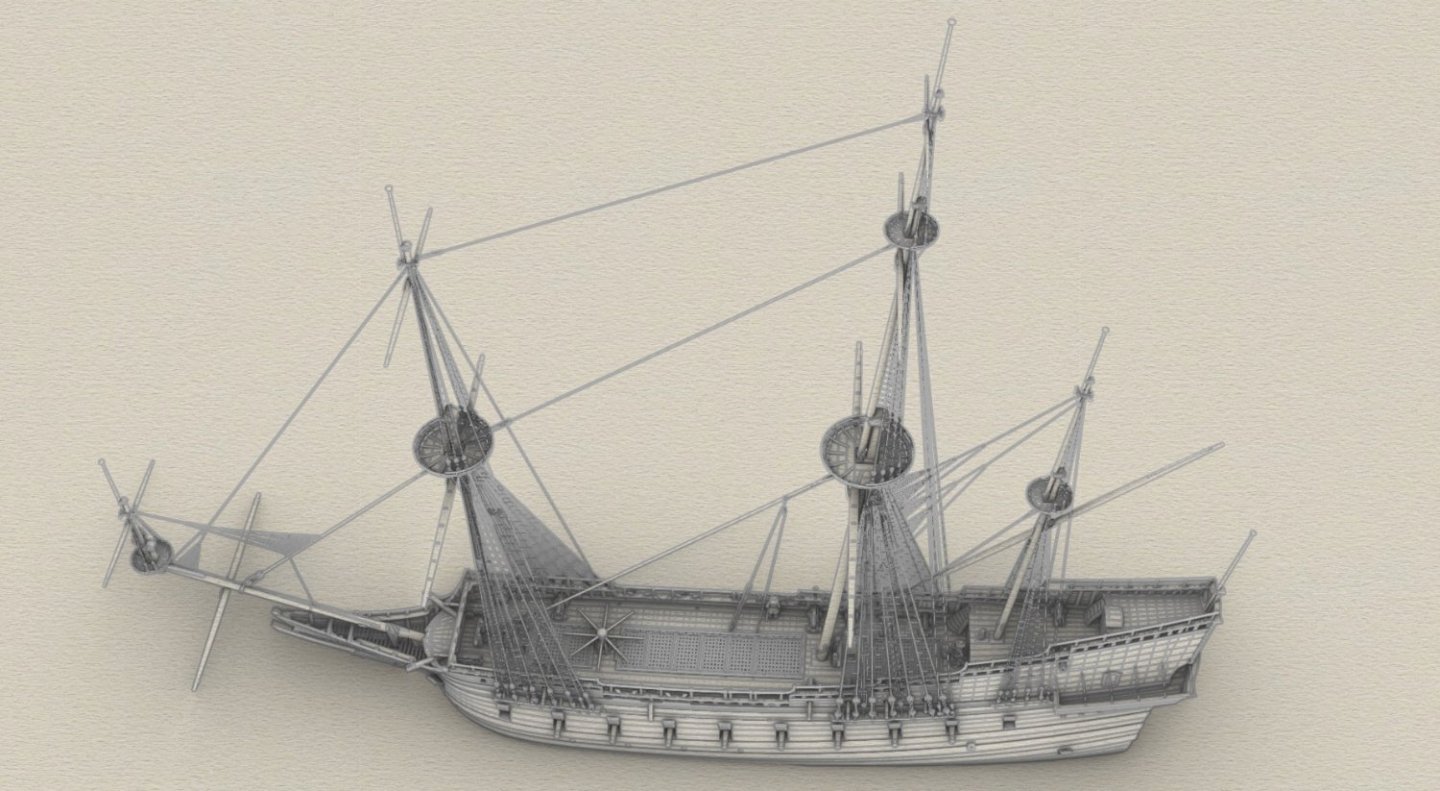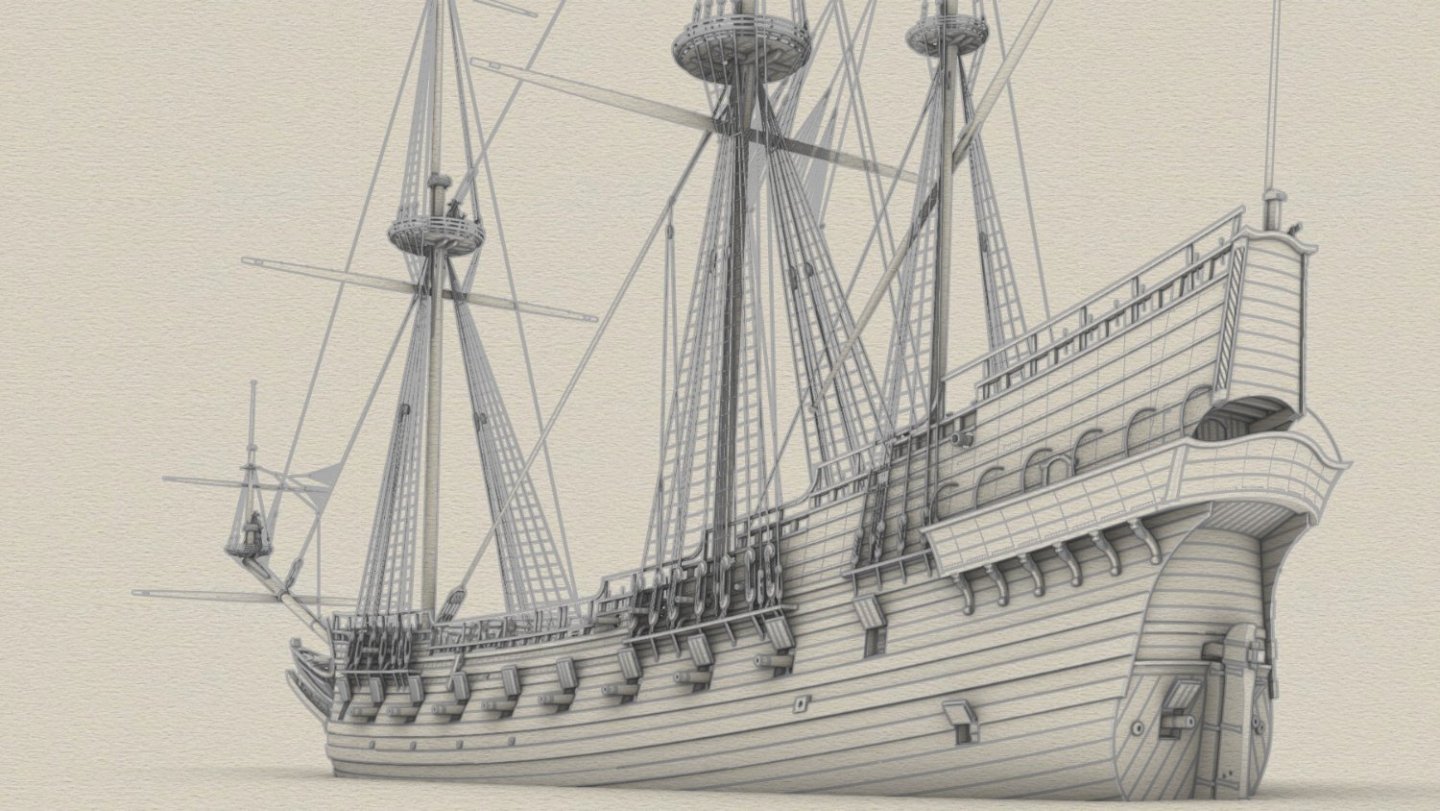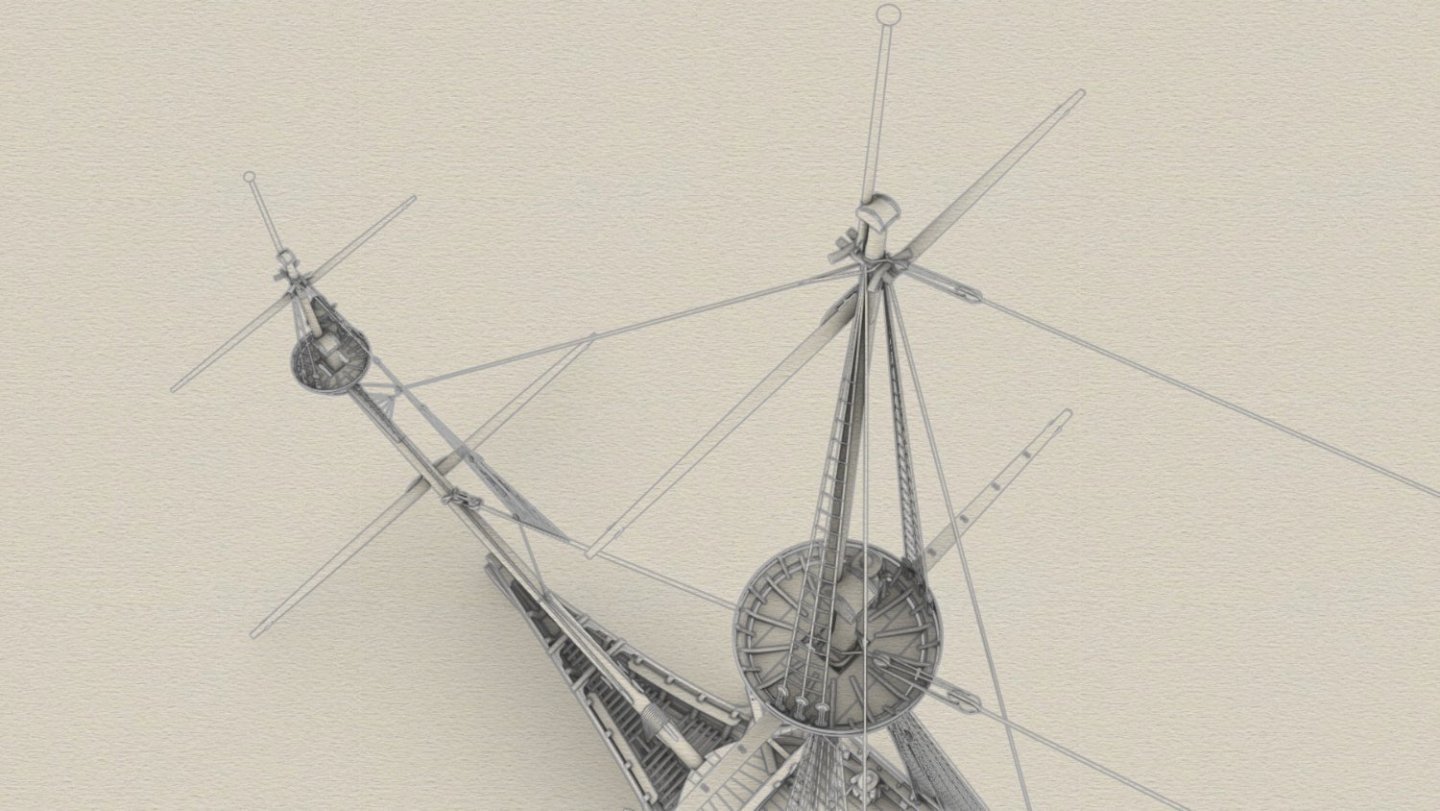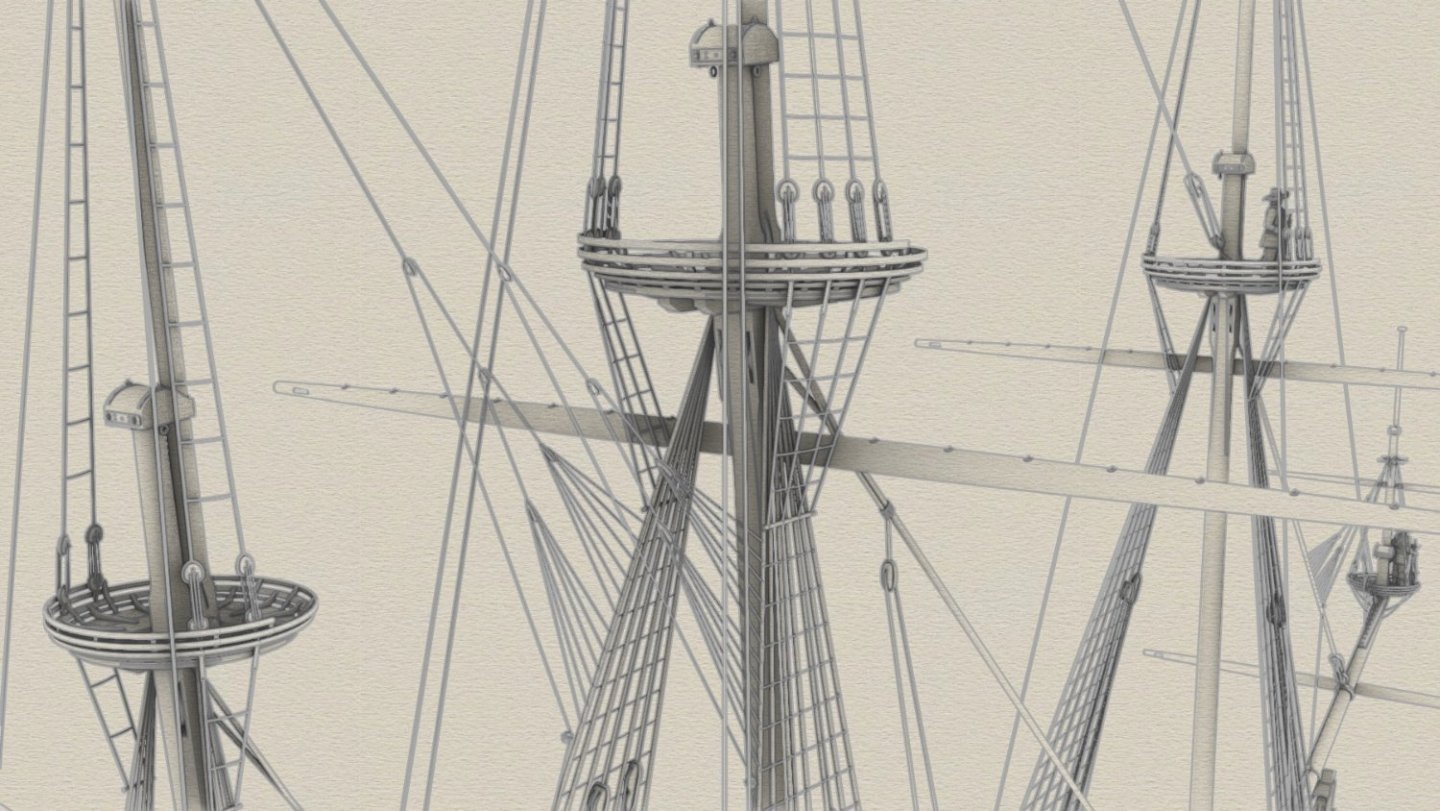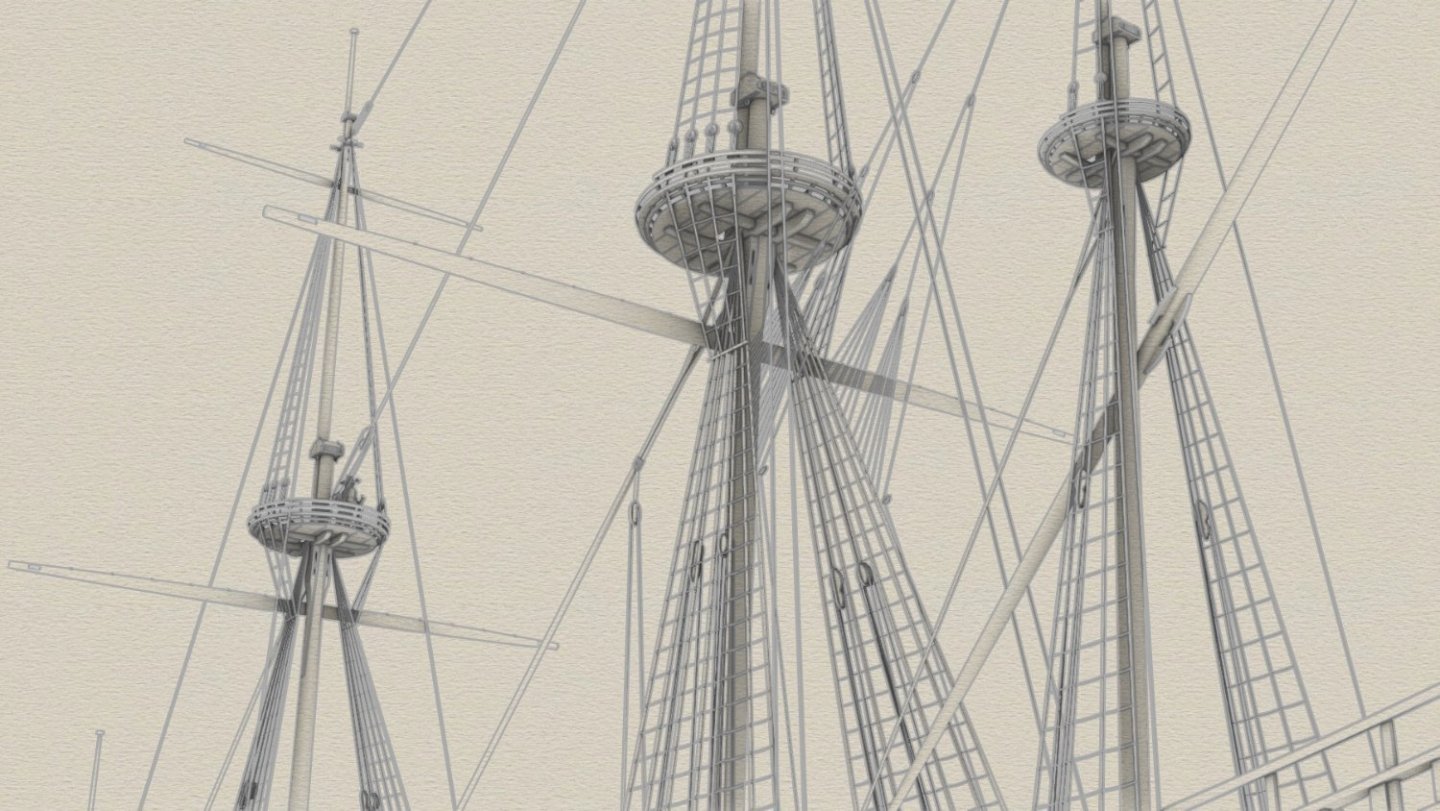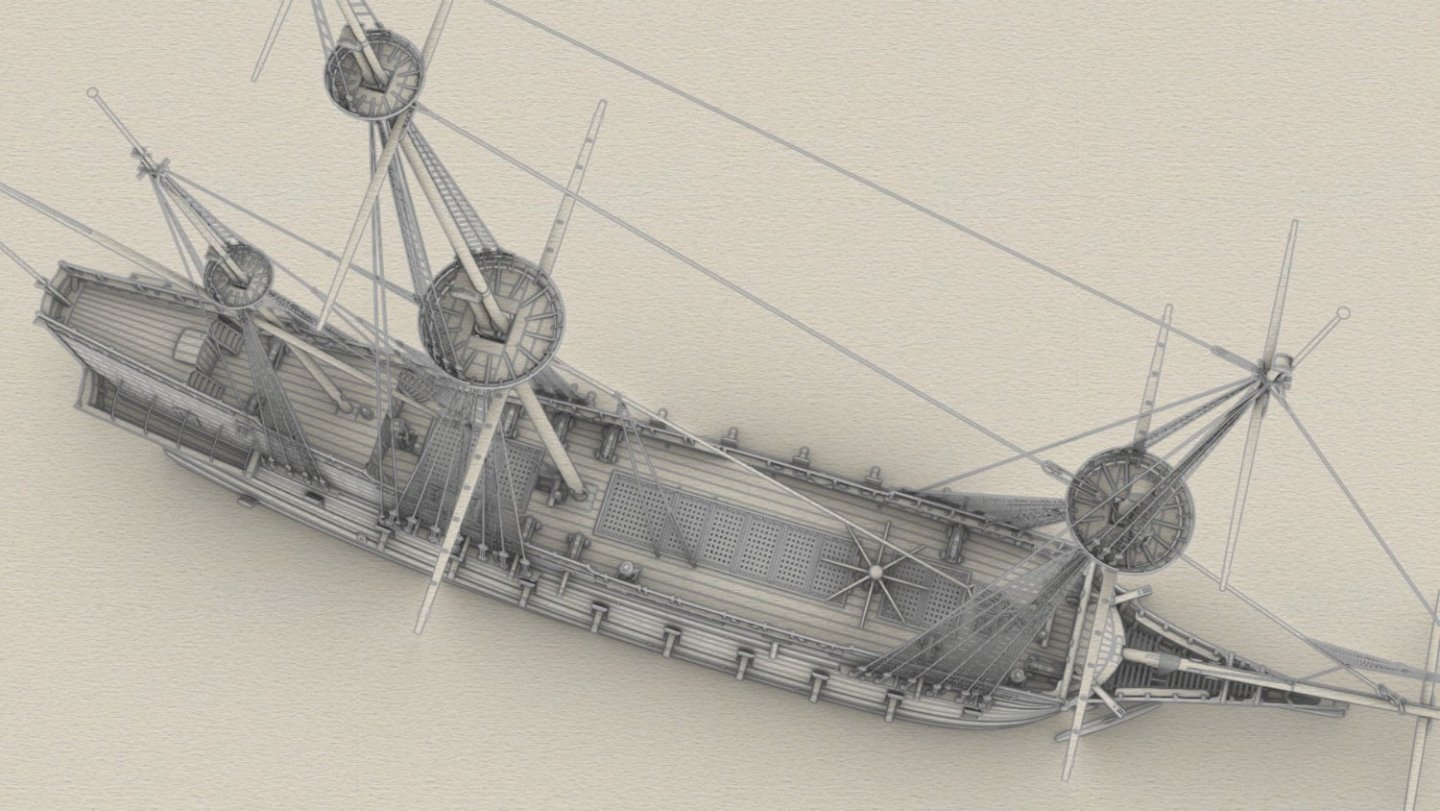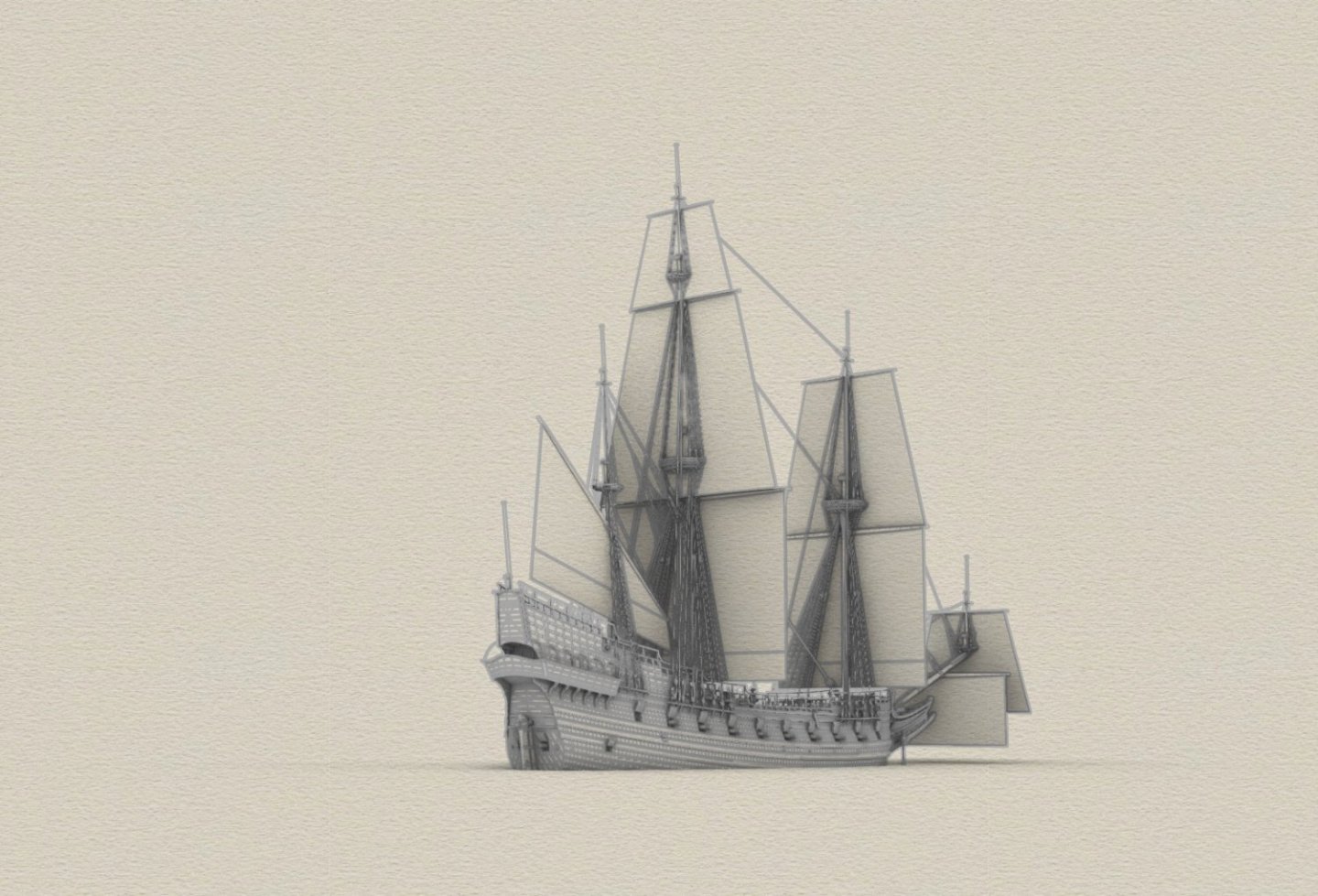-
Posts
977 -
Joined
Content Type
Profiles
Forums
Gallery
Events
Everything posted by Waldemar
-
Hello Ron, Not much data available for the first half of the 17th century. Apart from the well known work by Adrian Caruana, The History of English Sea Ordnance 1523–1875 with rather sparing information for this difficult period, there is also Journal of the Ordnance Society which you may investigate. Be that as it may, any existing sources were also certainly explored by Richard Endsor and the resulting interpretation presented in his works, which are all too easy to find on the web to list them here.
-
Bowlines and Martnets. Mysterious martnets deserve more commentary because the configuration shown here, reconstructed by me on the basis of period iconography, was used here for the first time. With regard to this item, other modern historical reconstructions of ships' rigging (including the Vasa rigging reconstruction), were usually based on an unsatisfactory, not to say incorrect, interpretation of R.C. Anderson presented in his otherwise excellent as a whole work The Rigging of Ships in the Days of the Spritsail Topmast, 1600–1720. My interpretation of the martnets configuration, shown below, is first and foremost consistent with the iconography, is functional, can be simplified or elaborated as required, and can be flexibly modified, e.g. by lengthening or shortening pendants or by using different blocks (e.g. two single blocks instead of one double block at the stay, or a direct connection/combination of a dead block/euphroe with a single sheaved block).
-
Many thanks Martes. Hmm, all ropes have their correct, individual thickness and there is not much you can do about that. The background... I'll try some more experimenting, as you suggest, but I guess that's for later, because the priority now is to draw all the missing elements, which fortunately aren't that many anymore. We'll come back to this issue later, because of course an objective, assertively expressed evaluation/opinion/review is always desirable for best results.
-
Thanks Martes, however, that's down to the software developers rather than me. I just select the shots. The rigging from greater distances is quite ungrateful to render clearly and I'm trying various possibilities, as below, with clew lines added in the meantime. If you have any suggestions in this regard, please put them forward, of course. I would only add that this rather archaic appearance of the rigging as a whole is as much as possible intentional. Again, only one side shown.
-
Thank you very much Roman. Not to discourage you, but it's quite a tough experience and you also have to fight the inevitable mental crises. But if you are consistent, I urge you to go ahead with such an endeavour. You will have immense satisfaction... The woodworking has already taken off (no admiral permission to show photos 🙂). I insisted on using 100% pear wood for the prototype model (scale 1:15), but the museum modellers opted for alder instead. I'm happy with the result anyway, because it looks almost as good, well, and I managed to successfully persuade them to not use oak wood at all. My model, if any, would be definitely out of pear and some ebony, and nothing else. Roughly aiming at the dominant style of modern Belgian and French modellers.
-
At first I also tried to use 2D and 3D rotations, but this was a mistake. Time consuming and very inaccurate. I found a method that is relatively quick, straightforward and very precise at the same time. I will explain everything, but together with diagrams and a clear explanation, the preparation would take me at least one whole day, and I cannot afford it now. Please give me some time. Rather, weeks.
-
Yes, this is true. At first I was even going to not draw the rigging in 3D at all to save time, and instead make 2D sketches. But now, after gaining some practice and discovering some particularly useful tricks in Rhino, it goes very efficiently indeed. Even positioning the blocks in space at the correct angles is no longer a problem, but a pleasure. I love Rhino 🙂. The rigging configuration has been a variable over time and I do my best to guard against anachronisms. I have already mentioned some of the more important sources for this project in post #169, but in reality there are still more to be used. On the other hand, the rigging for one period was not uniform/standard either, so I have some leeway in choosing specifics.
-
Lieste, that's okay, yet, in my opinion you are looking for a hole in the whole, because no one here will even try to read these dimensions given in feet, inches, lines and points (although they are perfectly legible in the tables), they will most likely just do a quick, hassle-free redraw of the graphic. And also in this sense Boudriot's monograph may be even regarded as an overkill for the needs of this project. Also, try to explain to others (I don't need to), that they should be content with the gun barrels only without carriages and implements, and whether the 1786 artillery system can be used for the time of, say, the War of the League of Augsburg, the War of the Spanish Succession, the Seven Years' War or the War of American Independence.
-
Boudriot's monograph on French artillery of very limited use!? It holistically describes all the artillery systems of the period in question, not just one of them. And not only the gun barrels themselves, but also the carriages, tackles, gun utensils, etc. And it does so with a precision, clarity and reliability that presumably even exceeds the needs of this very project for which it is to be used. And all this in one book. But I admit, I didn't know beforehand that it was more about free, more or less random downloads from the web.
-
Well, I don't get much opportunity to look at other threads, but here I can see that I'm missing out on a lot by doing so. What strikes me about your model is the attention to detail, precision and exceptional neatness of execution, but without that undesirable effect of excessive, artificial sterility. I wish "my" modellers here would also build my reconstructed ship to your standard, but I know they too have a deadline...
-
For the Spanish ordnance (most useful) – Enrique García-Torralba Pérez, La Artillería Naval Española en el Siglo XVIII. Su evolución técnica y su recíproca influencia con la arquitectura del buque, Ministerio de Defensa, Madrid 2010, ISBN 978-84-9781-591-8 (includes printed and digital (CD-ROM) reproductions of source documents and plans), – Juan José Navarro, Álbum del Marqués de la Victoria (1719-1756), Lunwerg Editores, Museo Naval Madrid 1995, ISBN 84-7782-352-9, ... and very, very rich (graphic) resources of the highest quality put online by Spanish national archives. For the French ordnance (really no more is needed) – Jean Boudriot, Hubert Berti, Artillerie de mer. France 1650-1850, Ancre, Paris 1992, ISBN 2-903179-12-3 (includes large reproductions of contemporary plans and drawings).
-
Right. There are times when I'd happily swap with a blacksmith or carpenter, just to avoid 3D modelling some nasty element, which is at the same time so easy to shape in a traditional, physical way. I can say that this is also my daily experience. It's common to try first different, including unnecessarily over-complicated ideas to do a task, but after many attempts and hours of trying, it is usually possible to find the simplest ones that give just those great, desirable results.
-
@Montaigne Went the easy way and simply PM sent you a Rhino 7 file with this block. The hook itself (its larger end with an elliptical cross-section) was connected to the iron strop of the block (with a rectangular cross-section) with the "Blend Surface" command (very useful in such situations). Basically a trivial thing in a technical sense, but there was a bit of trying on getting the right shape. Anyway, as you surely know, you can play with the shapes as you wish, provided, of course, it is about regular geometry, as opposed to broken, bent, heavily corroded or otherwise geometrically damaged items. And also a photograph of one of the original specimens (you will never guess from which ship 🙂). From the excellent and so much useful work by Nathaniel Howe, The Rigging and Gun Tackle Blocks of the Swedish Royal Warship Vasa, 2011.
-
Montaigne, your conclusion in the last sentence is particularly pertinent and I like it very much. Regarding the specific ways used in Rhino to design a particular details, you can of course ask and so far I always managed to answer. Apart from a few organic decorative objects, all elements of the model are created with NURBS graphics. This is not only because I haven't yet had time to learn how to use SubD effectively, but mainly because this way I have tight control over dimensions and tolerances, right down to the last digit after the decimal point (in my case the document tolerance is 0.001 feet). This ensures that all the pieces fit together within this tolerance, that is so desperately needed, for example, in Boolean operations, one could say – one of the main pillars of this project. Admittedly, I've been short of time lately because the deadline is looming, but if needed I will certainly try to clarify at least any issues that can be explained relatively quickly. Taking this opportunity, below are some more renders for this stage of the project (30-Year's War figurine showing the scale by Captain_Ahab_62, Thingiverse).
About us
Modelshipworld - Advancing Ship Modeling through Research
SSL Secured
Your security is important for us so this Website is SSL-Secured
NRG Mailing Address
Nautical Research Guild
237 South Lincoln Street
Westmont IL, 60559-1917
Model Ship World ® and the MSW logo are Registered Trademarks, and belong to the Nautical Research Guild (United States Patent and Trademark Office: No. 6,929,264 & No. 6,929,274, registered Dec. 20, 2022)
Helpful Links
About the NRG
If you enjoy building ship models that are historically accurate as well as beautiful, then The Nautical Research Guild (NRG) is just right for you.
The Guild is a non-profit educational organization whose mission is to “Advance Ship Modeling Through Research”. We provide support to our members in their efforts to raise the quality of their model ships.
The Nautical Research Guild has published our world-renowned quarterly magazine, The Nautical Research Journal, since 1955. The pages of the Journal are full of articles by accomplished ship modelers who show you how they create those exquisite details on their models, and by maritime historians who show you the correct details to build. The Journal is available in both print and digital editions. Go to the NRG web site (www.thenrg.org) to download a complimentary digital copy of the Journal. The NRG also publishes plan sets, books and compilations of back issues of the Journal and the former Ships in Scale and Model Ship Builder magazines.


.thumb.jpg.c6343966b029e7941df5b987d129aac6.jpg)


